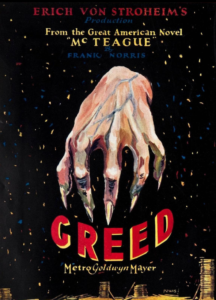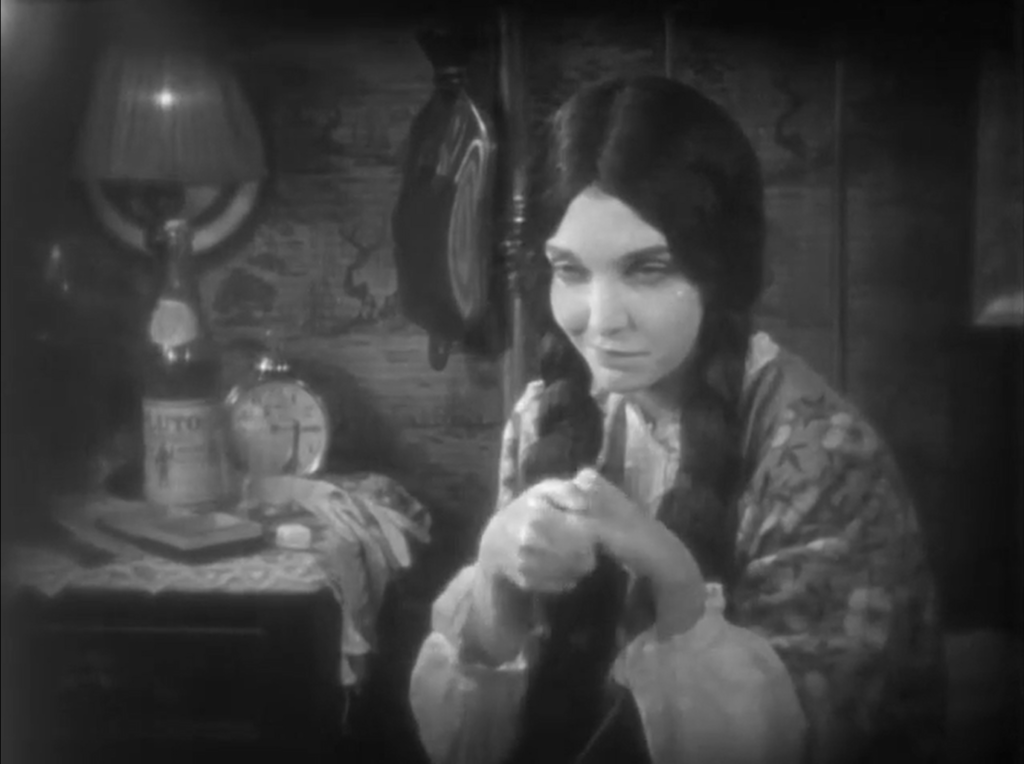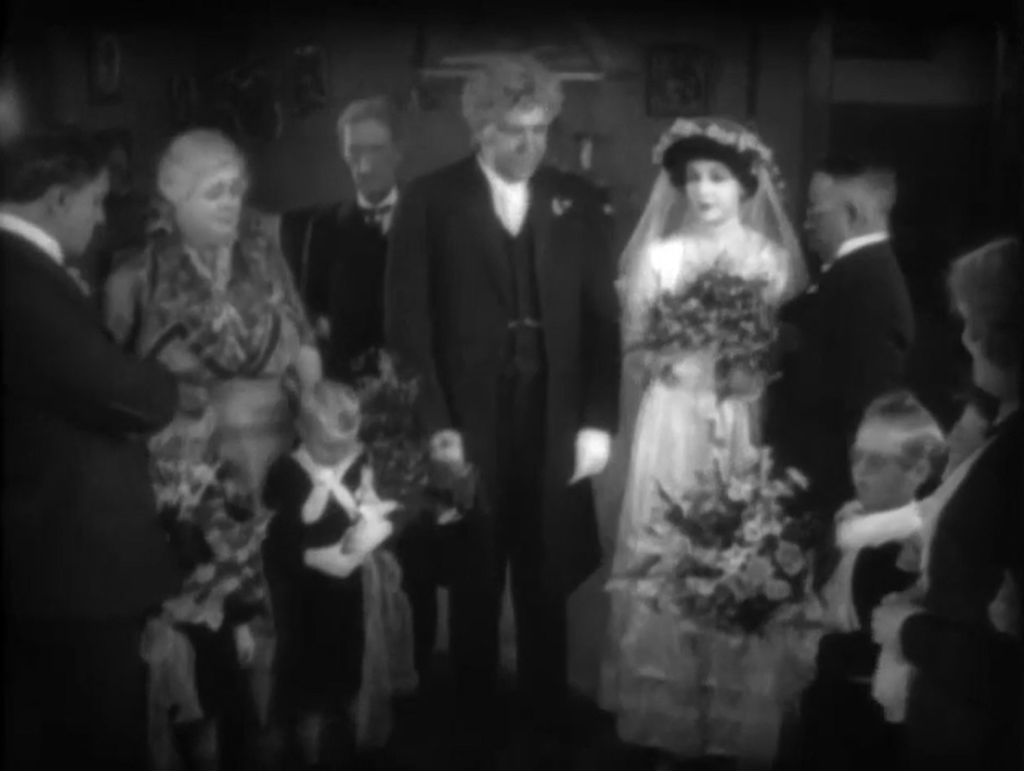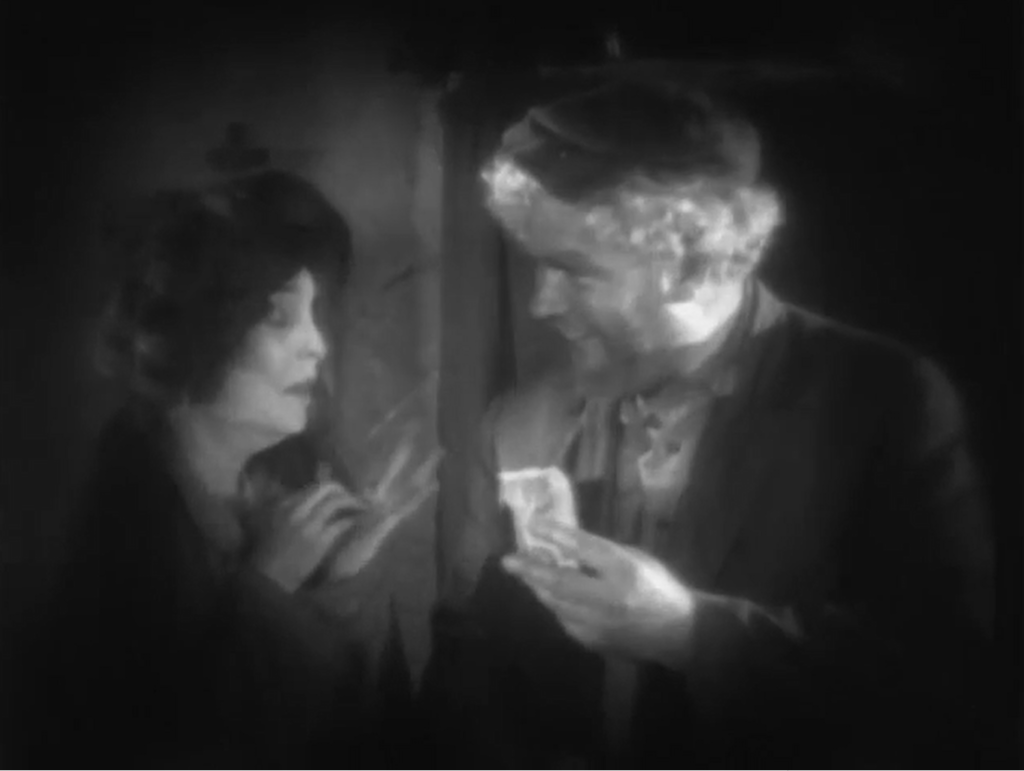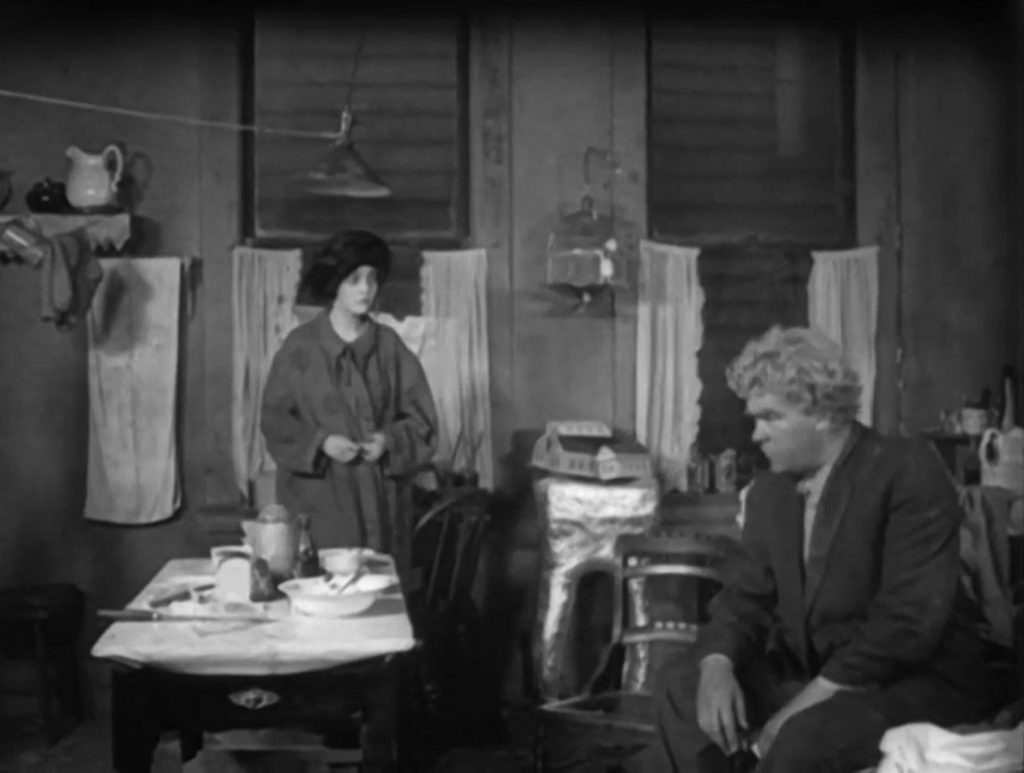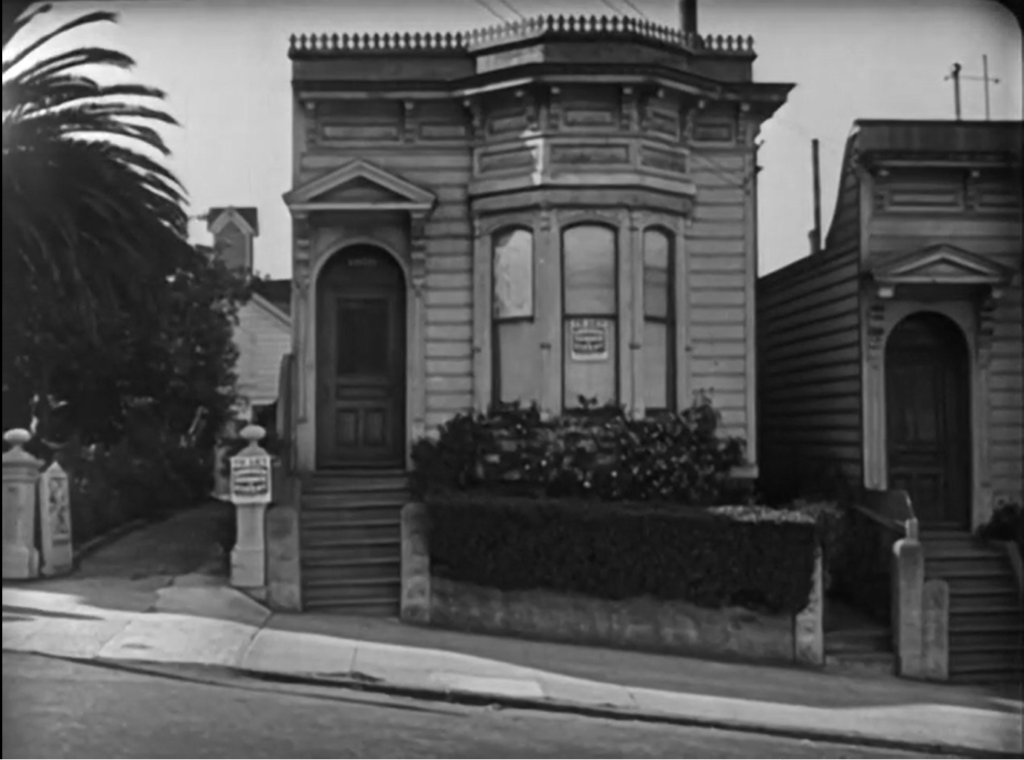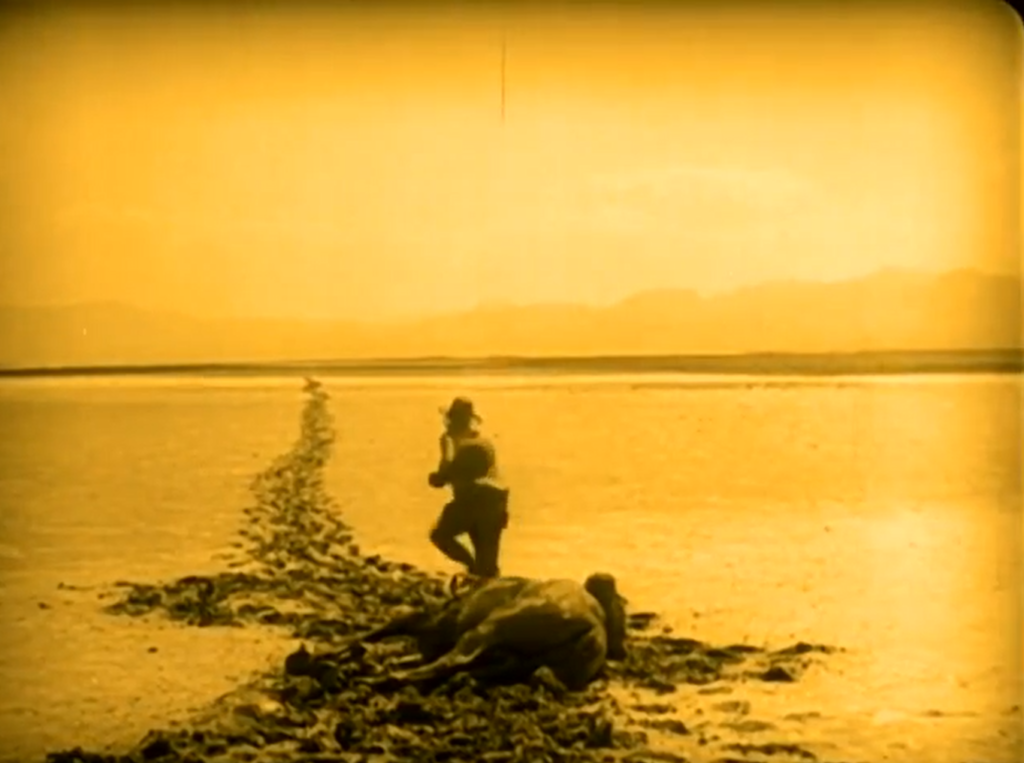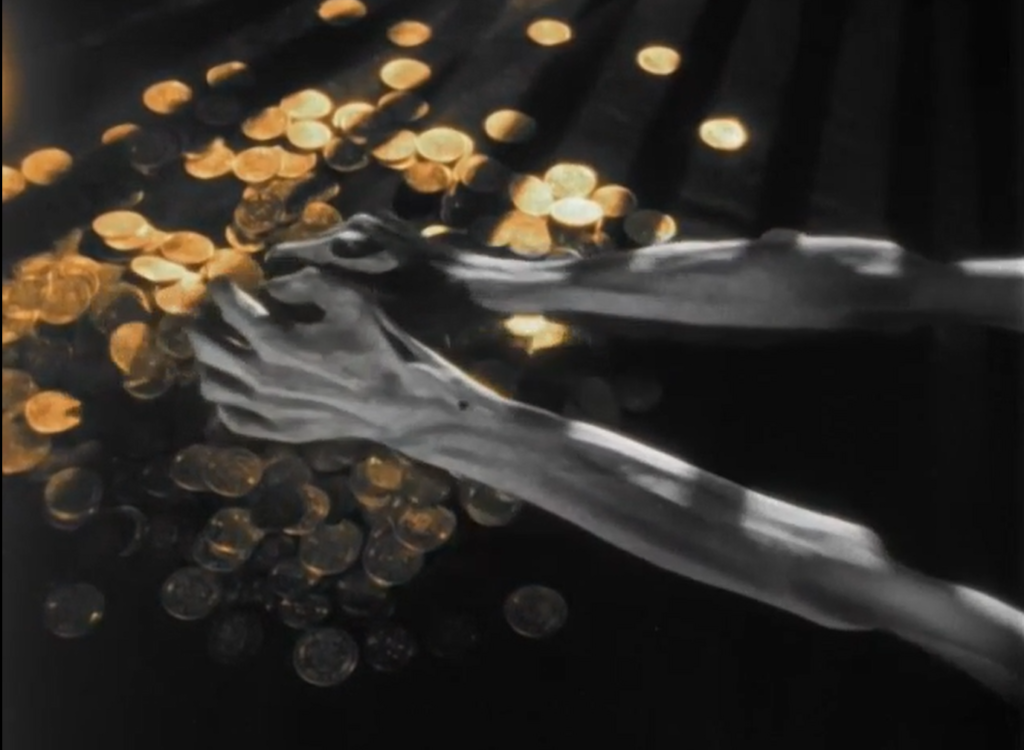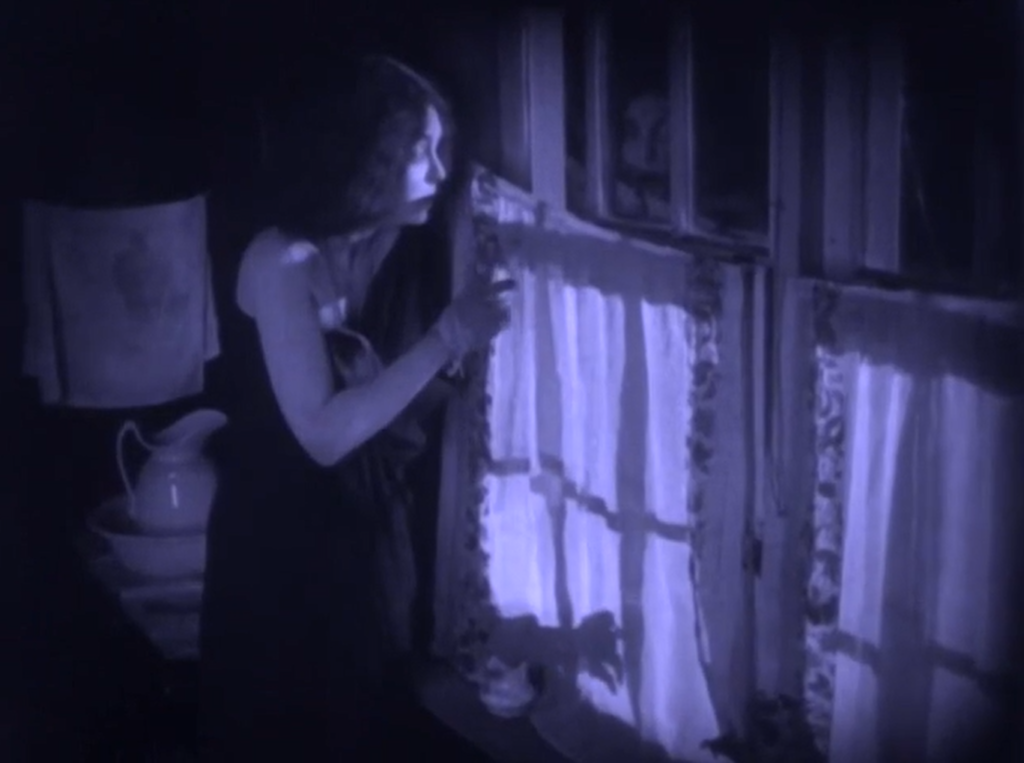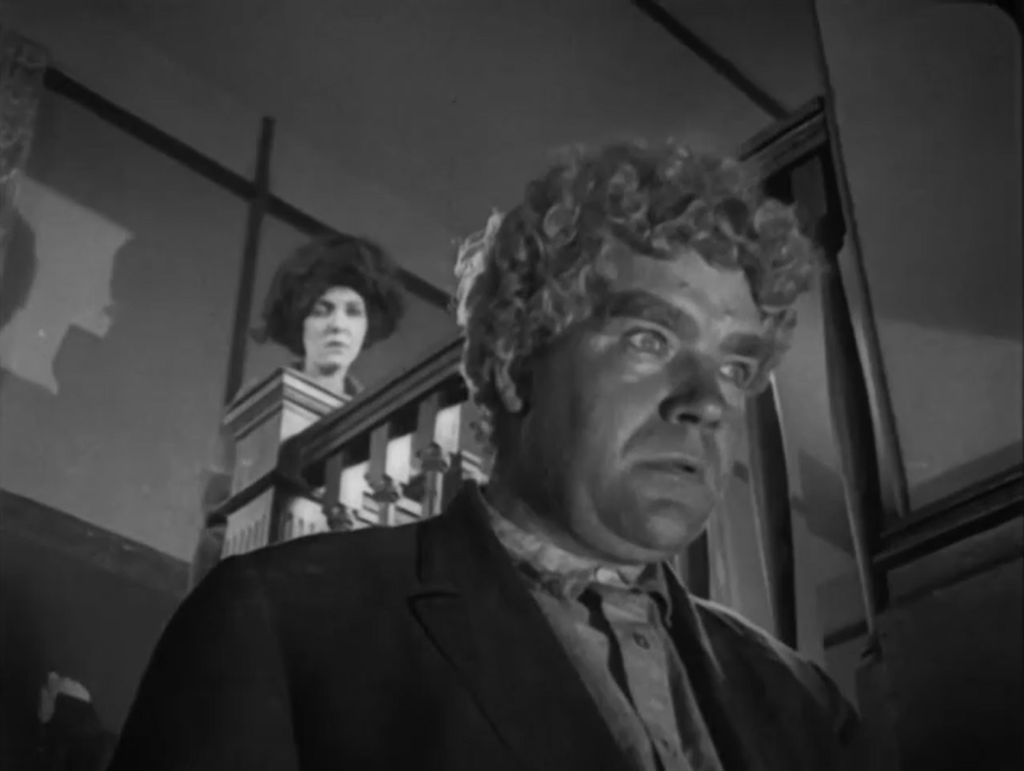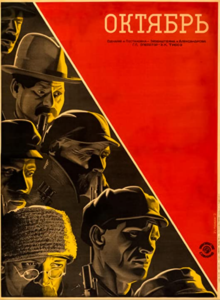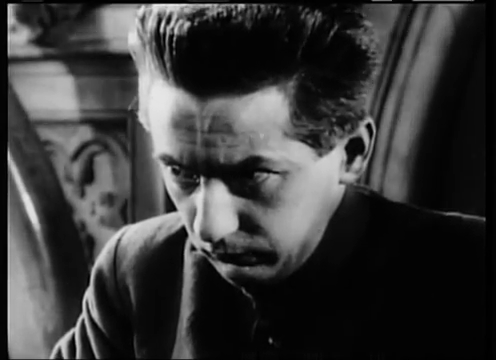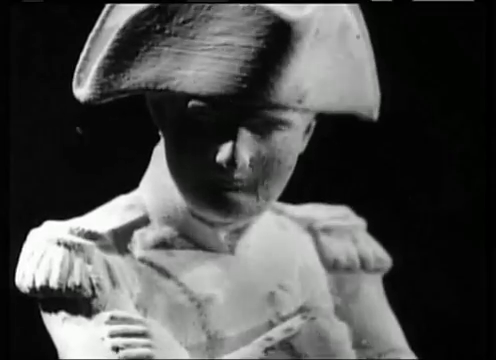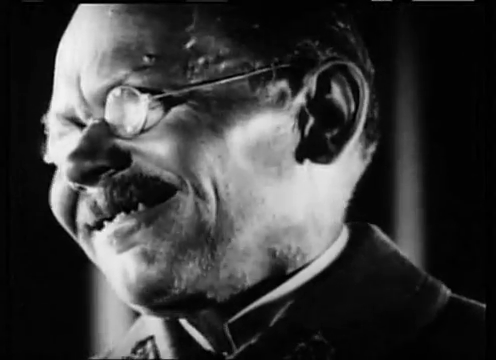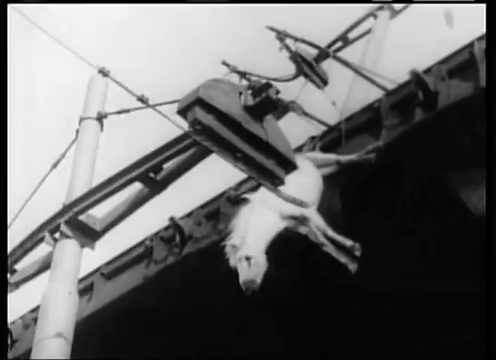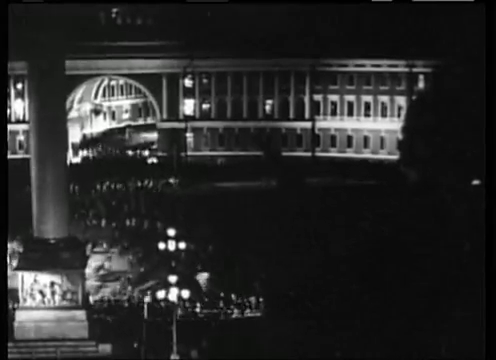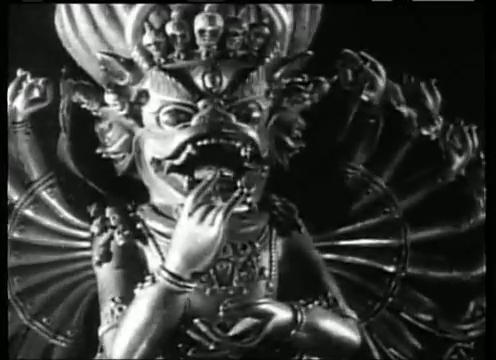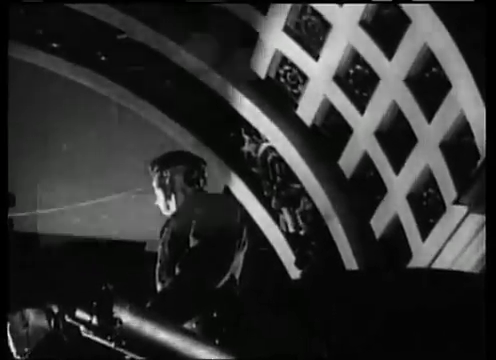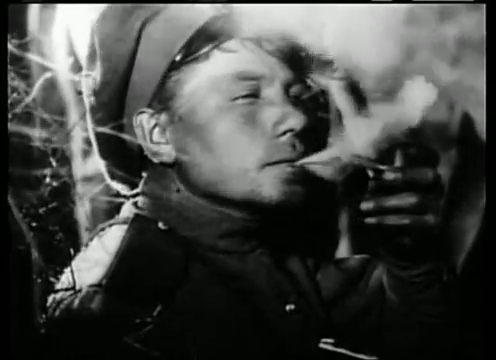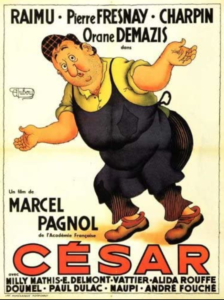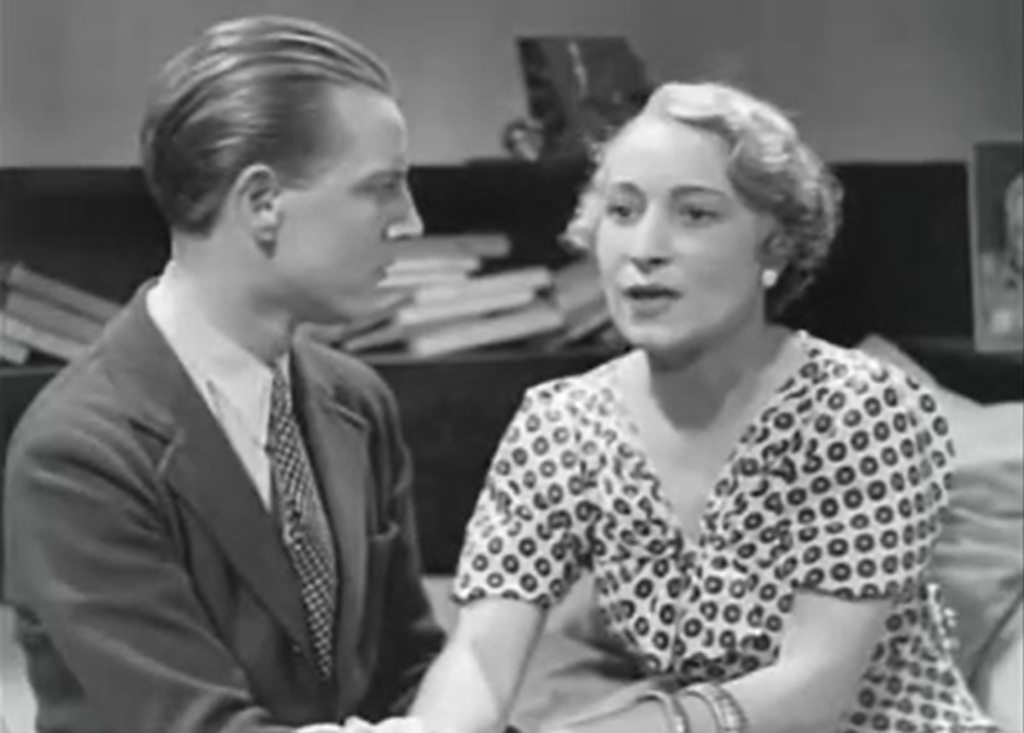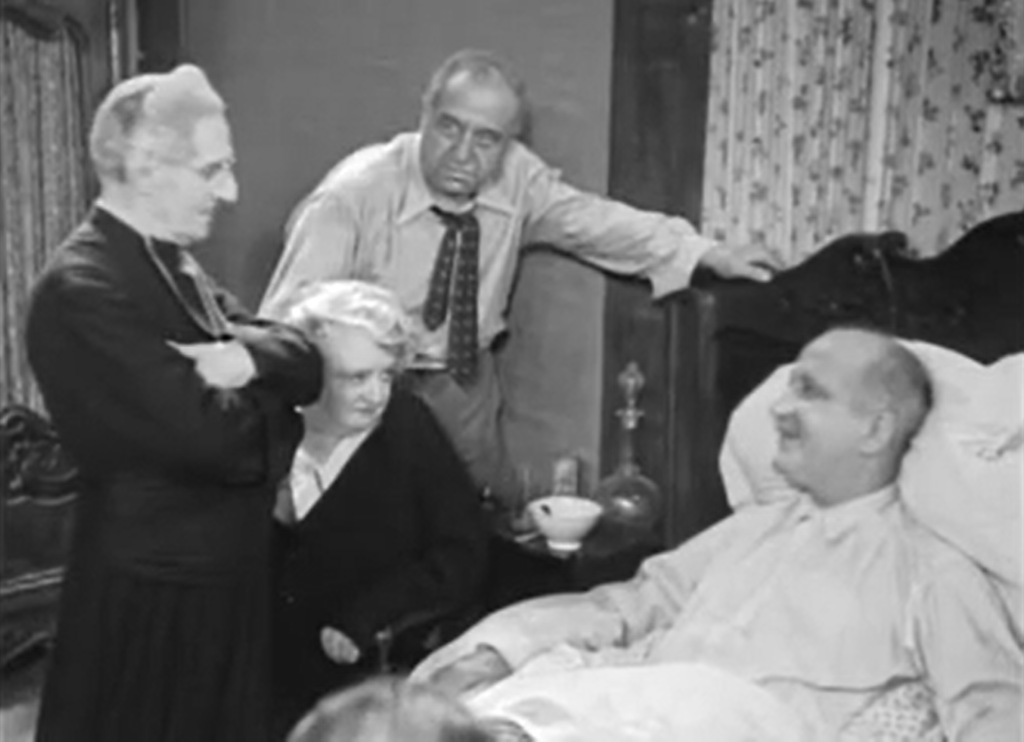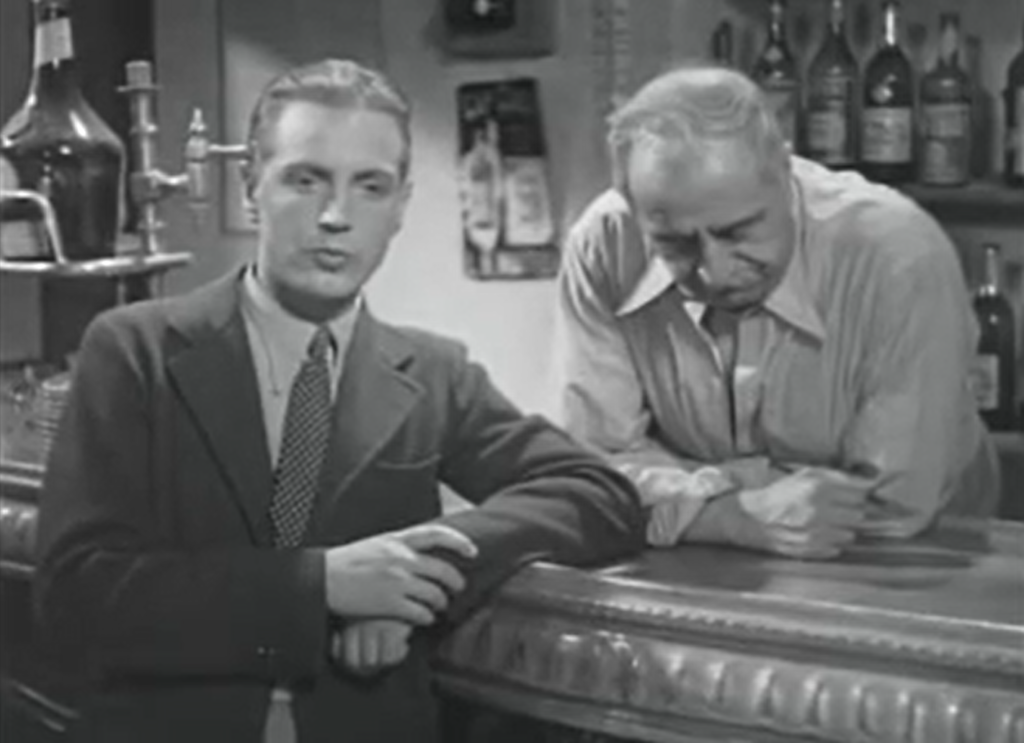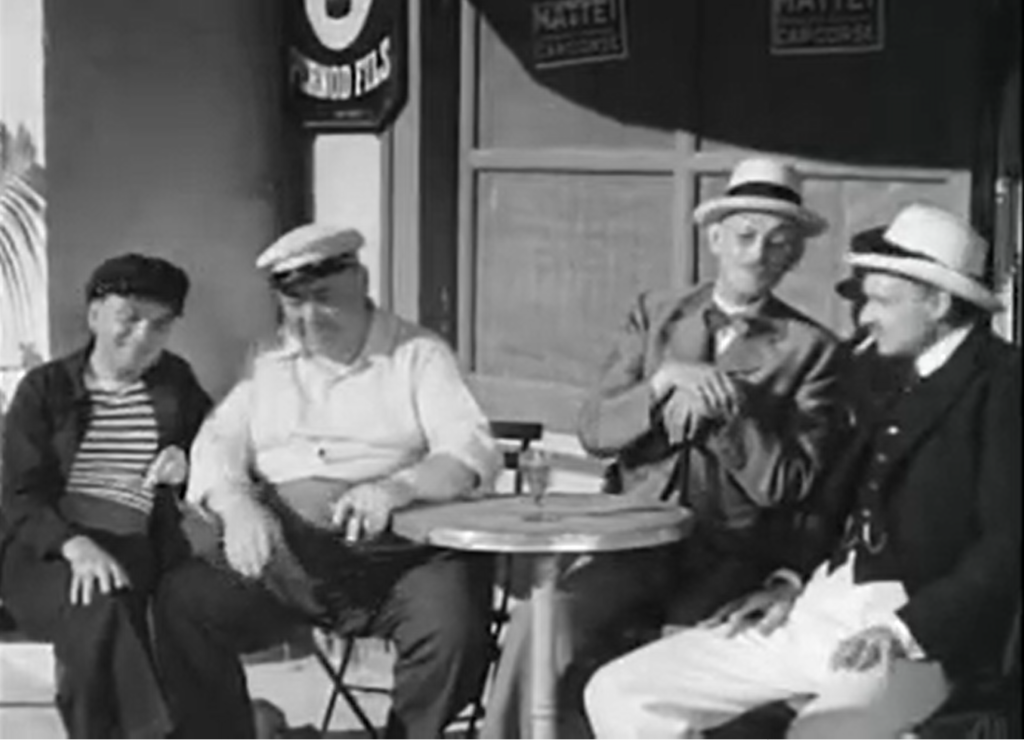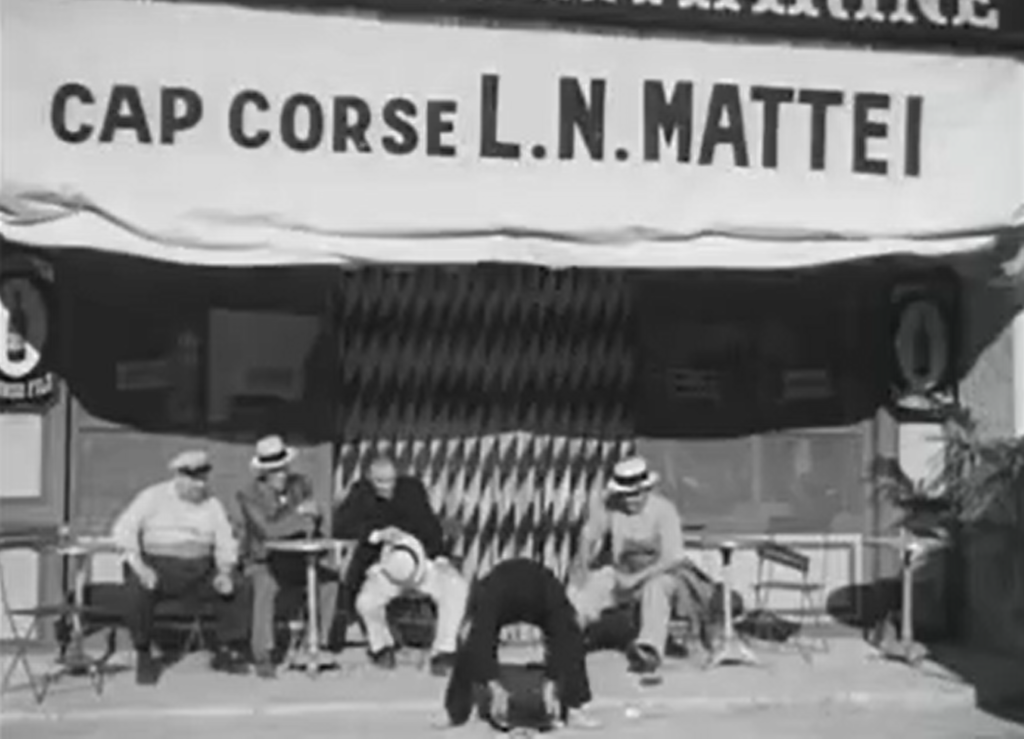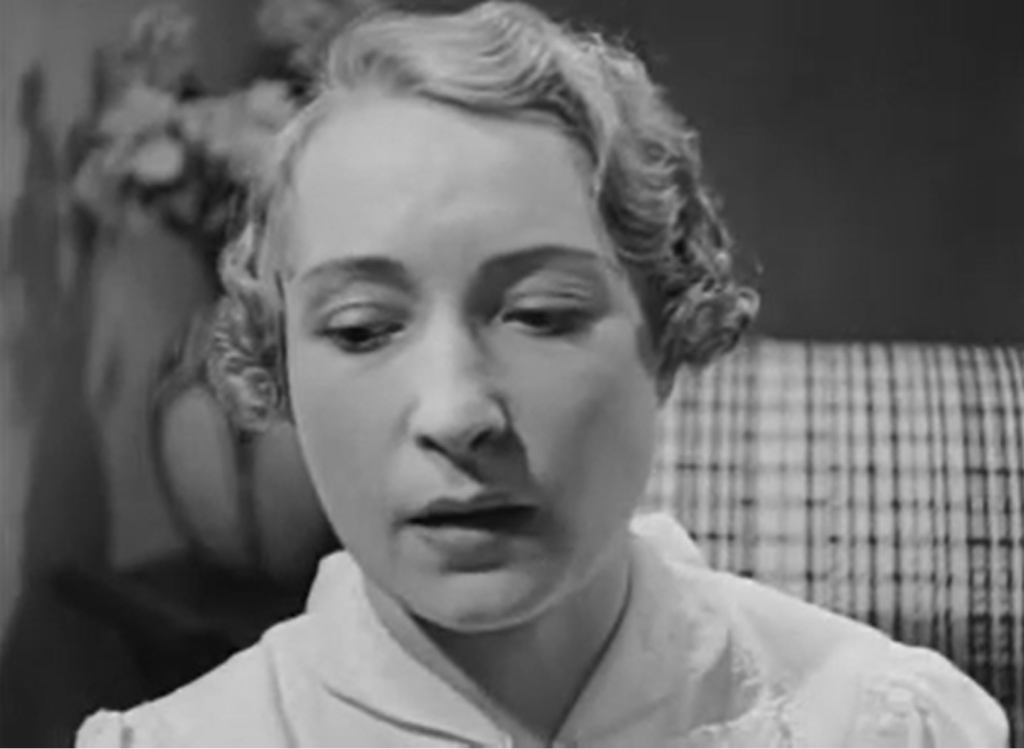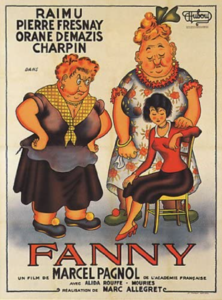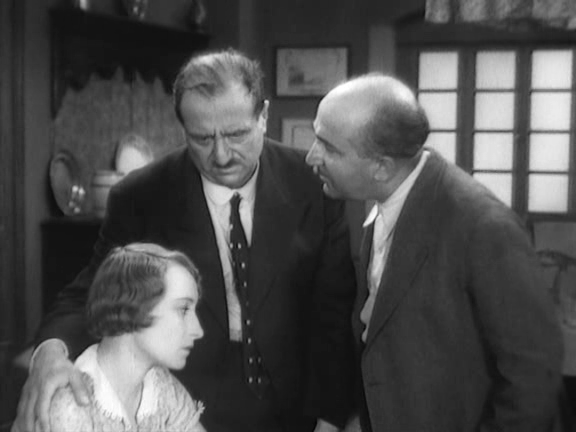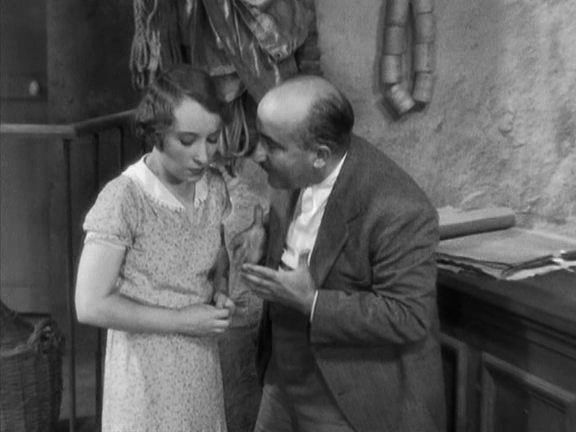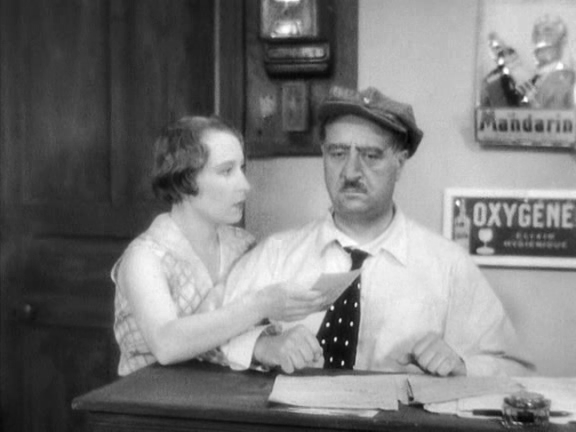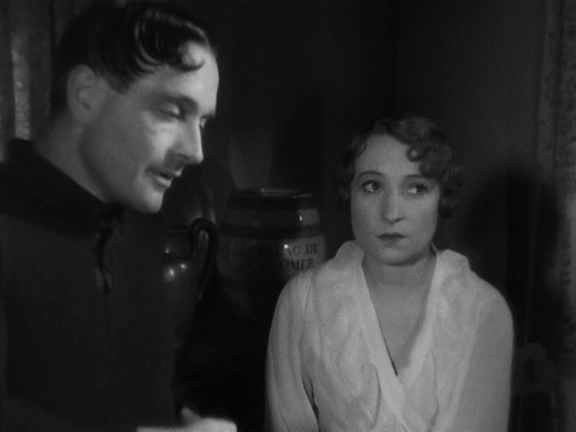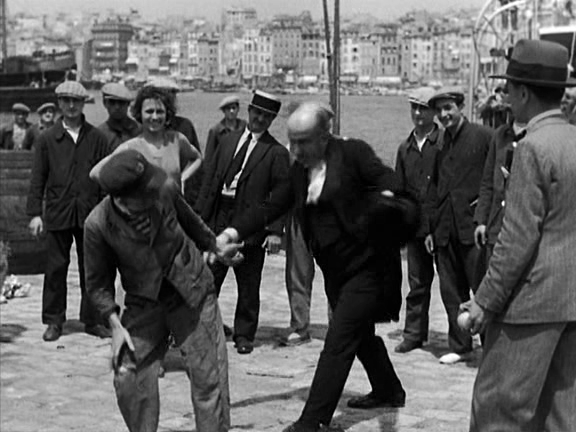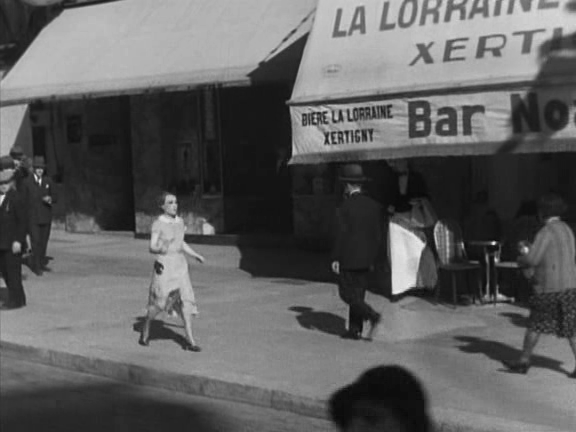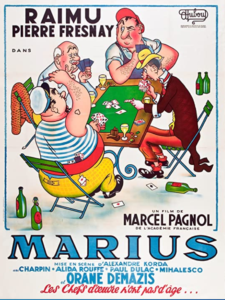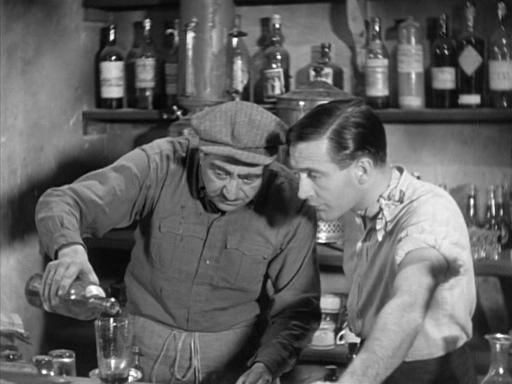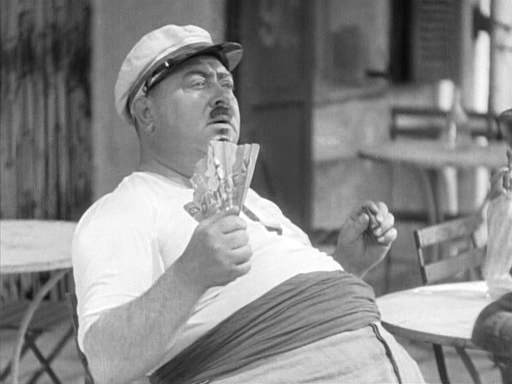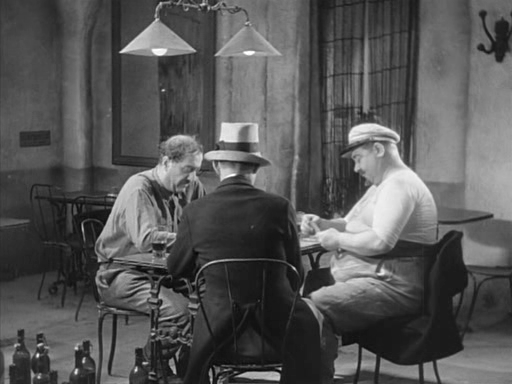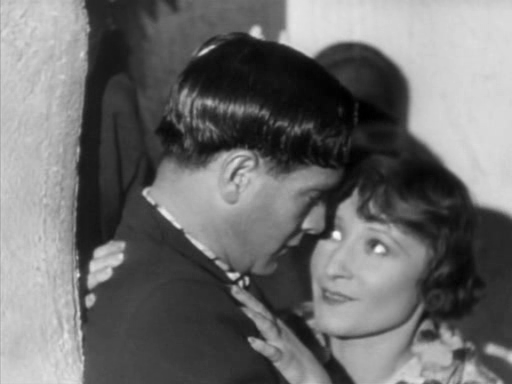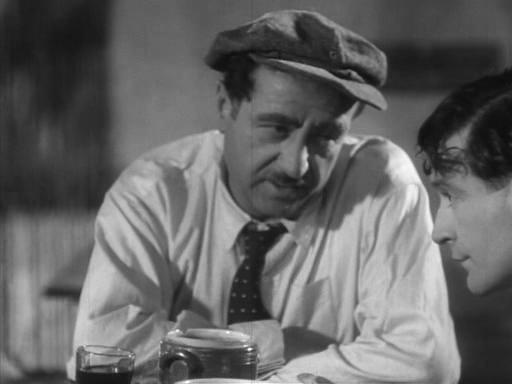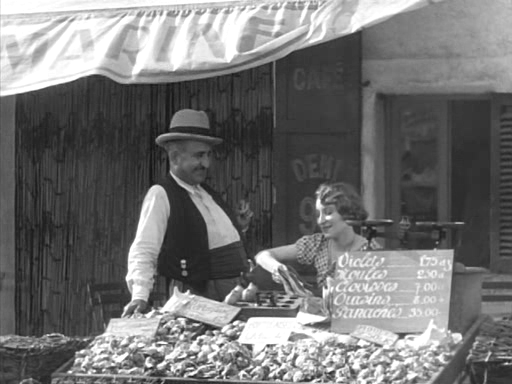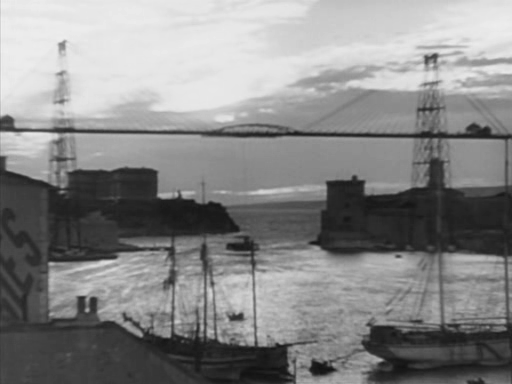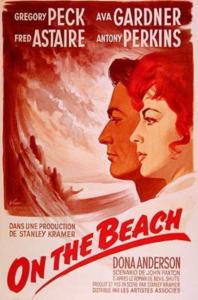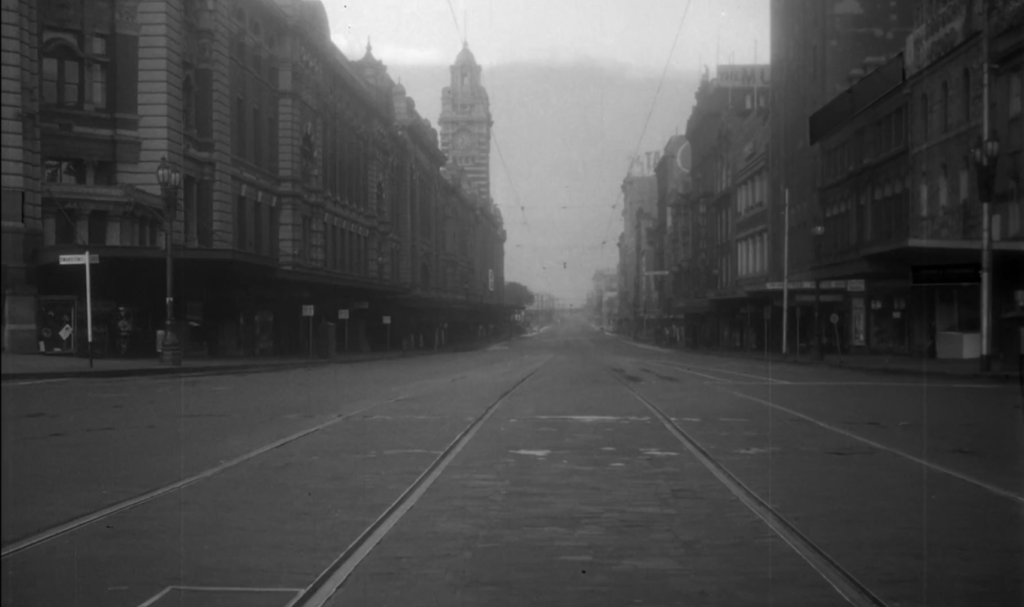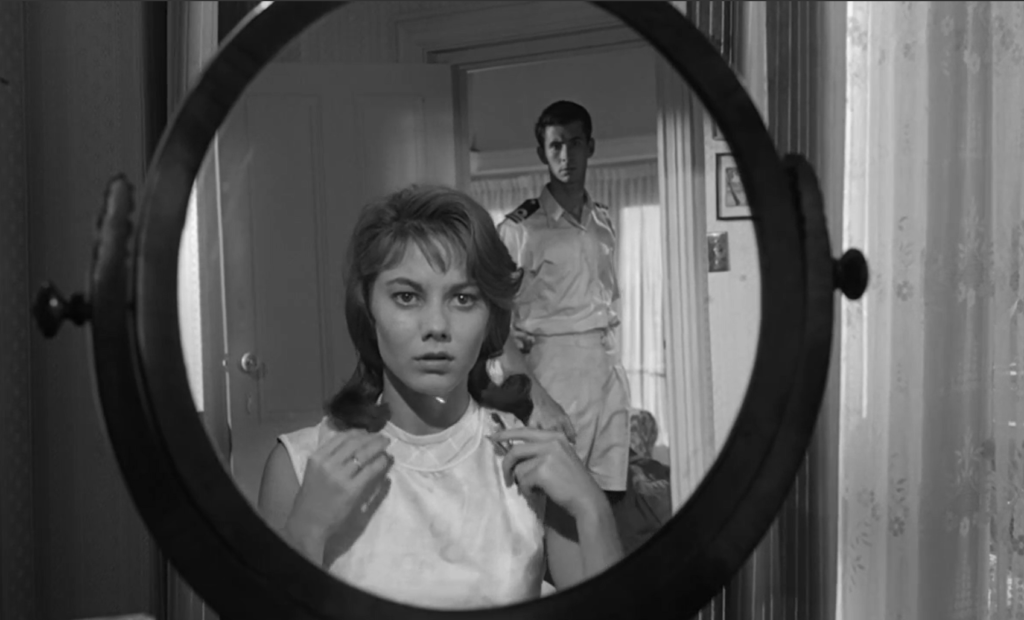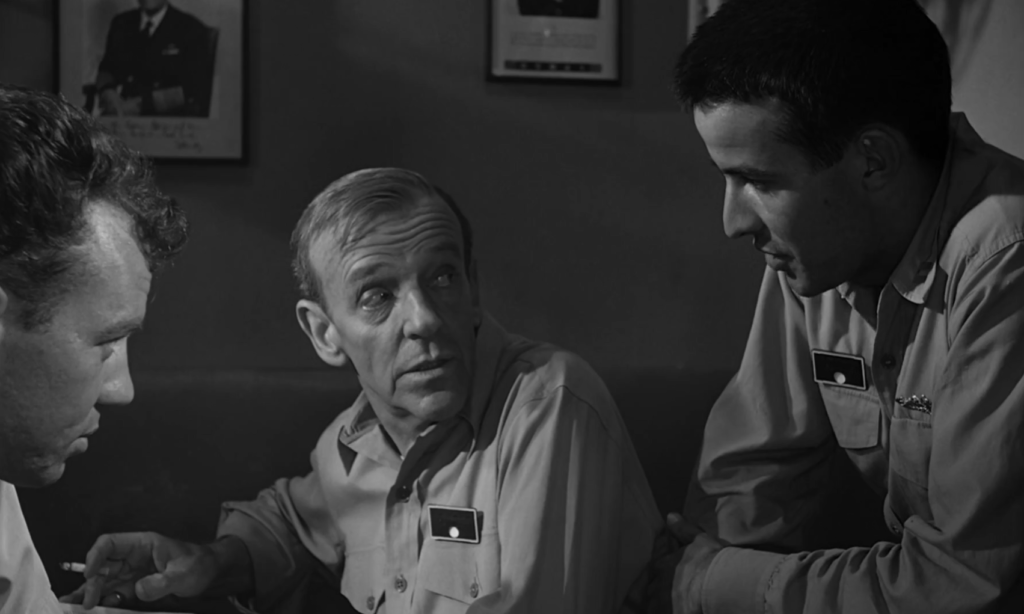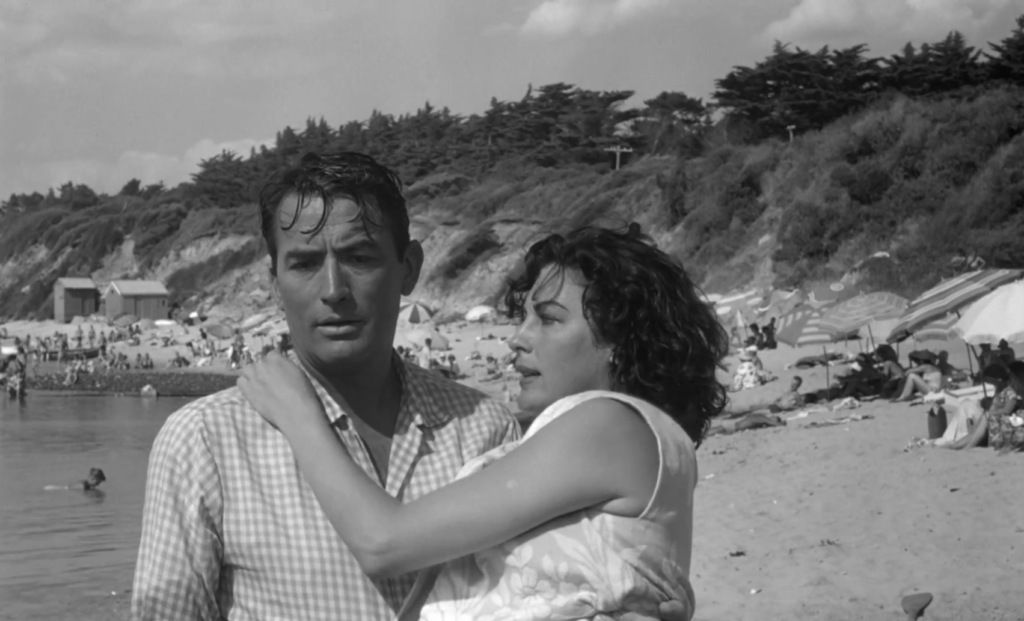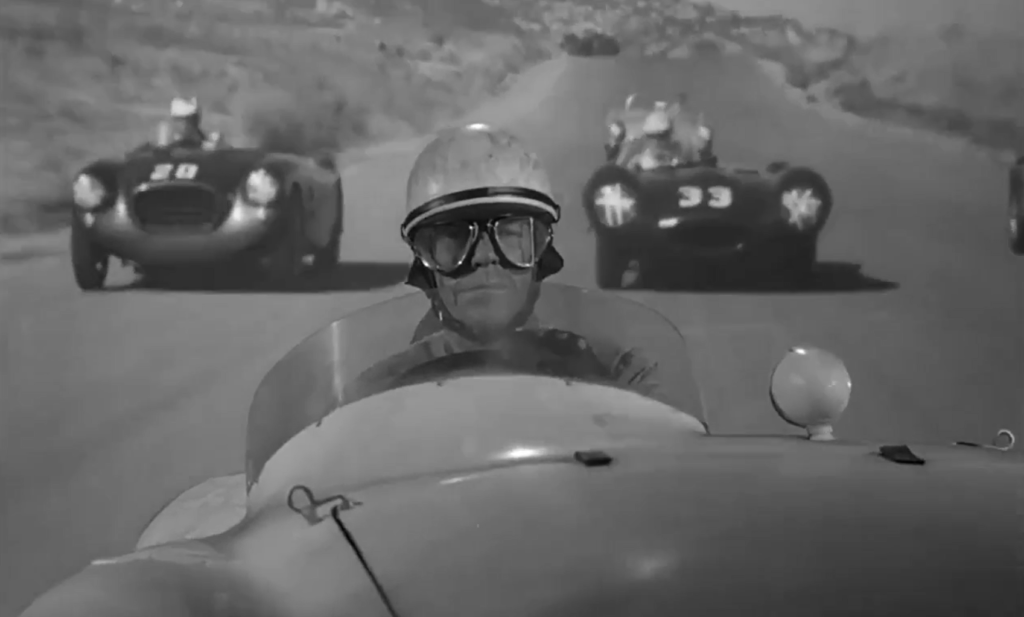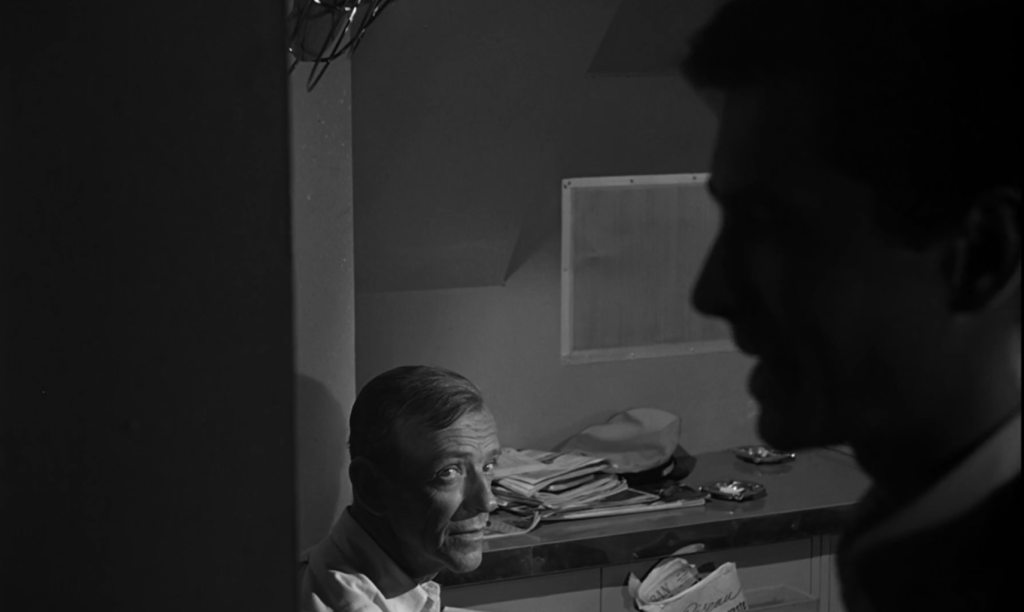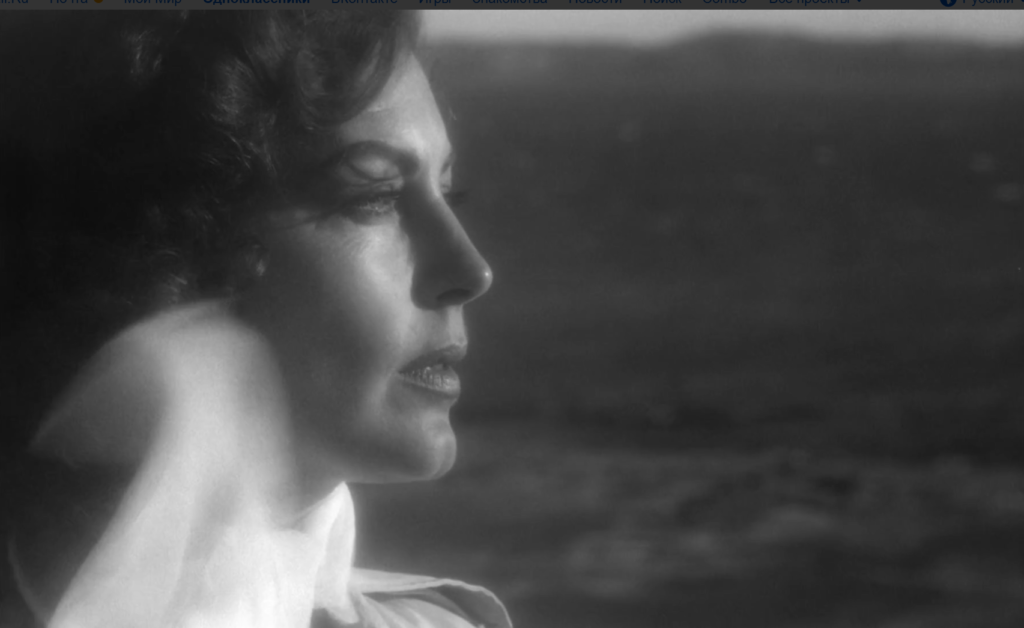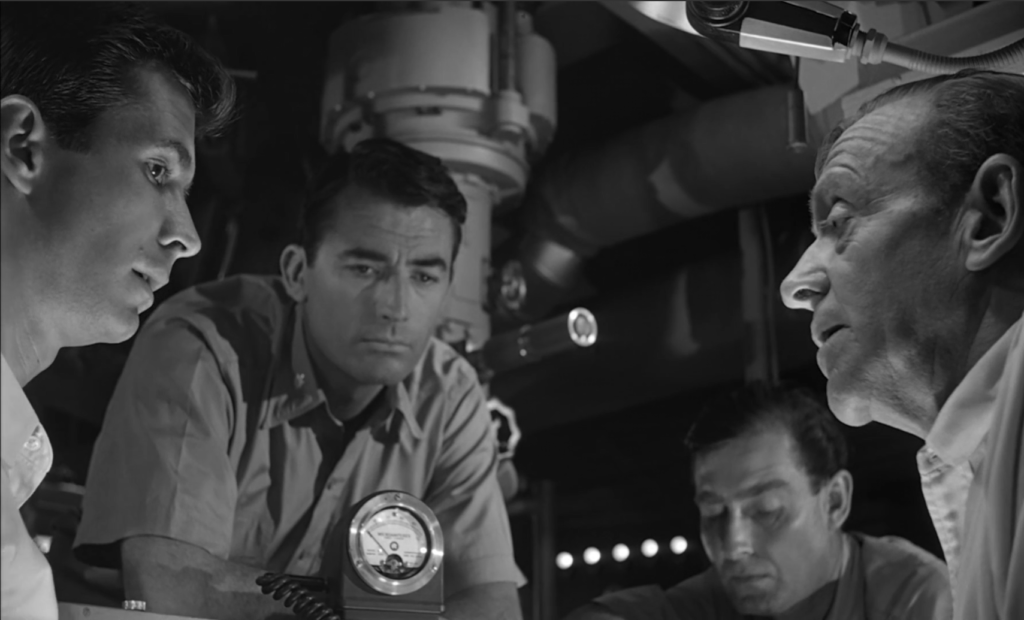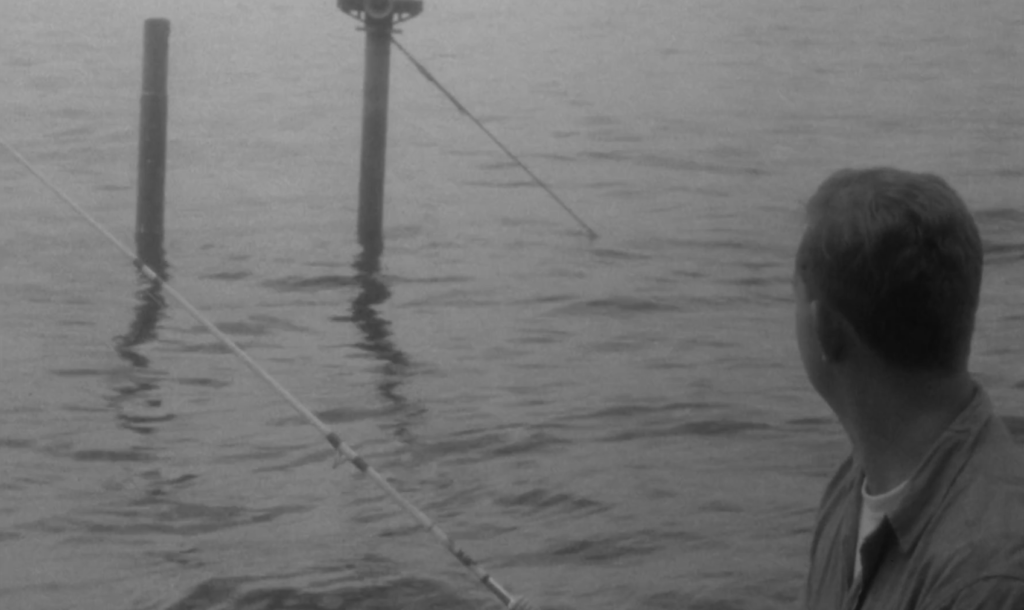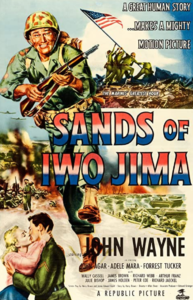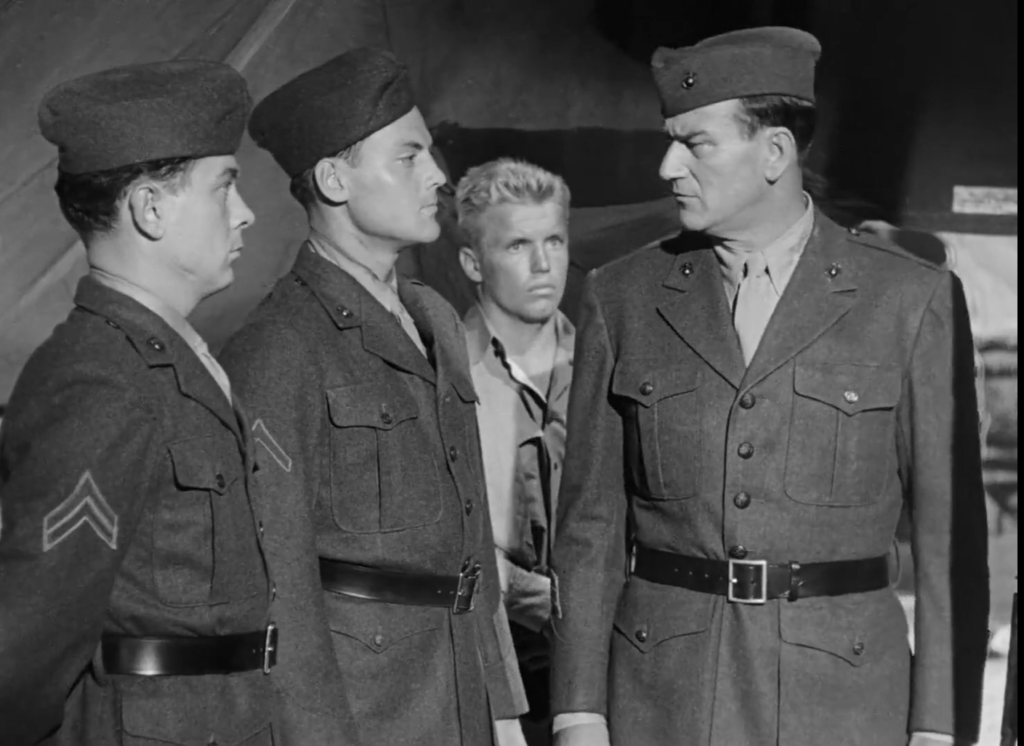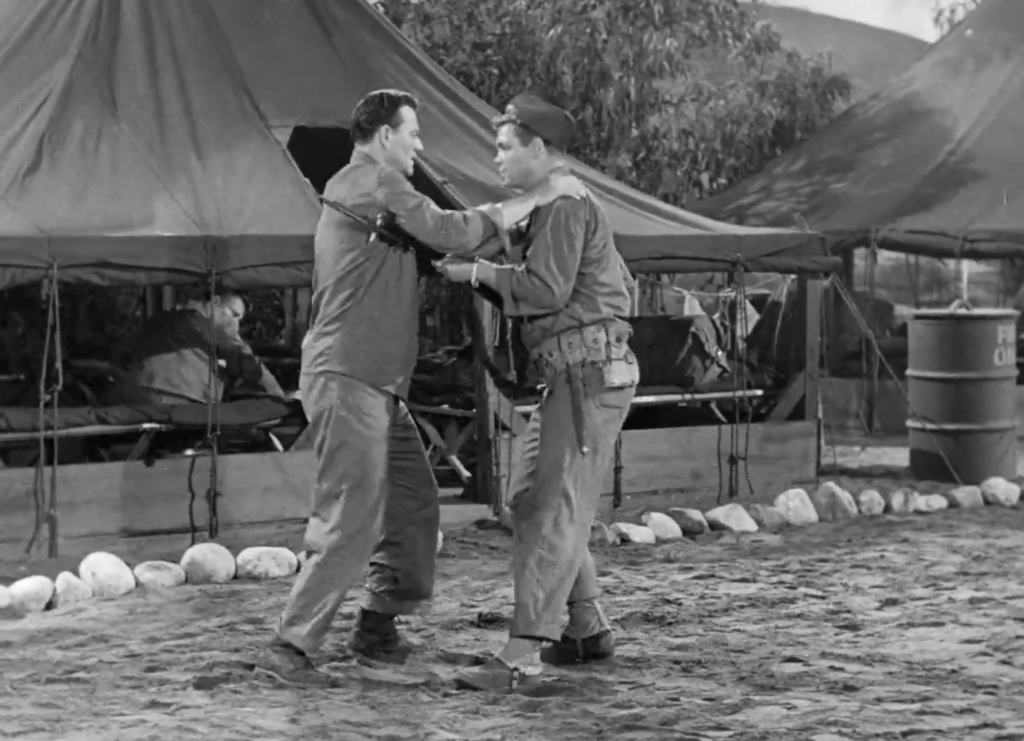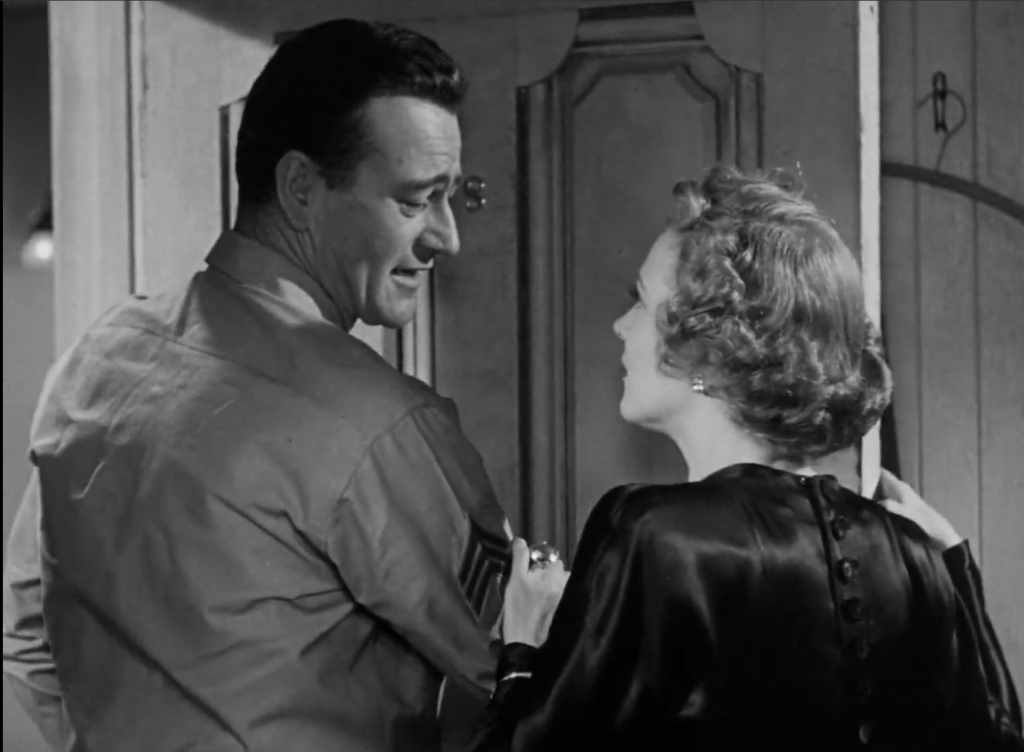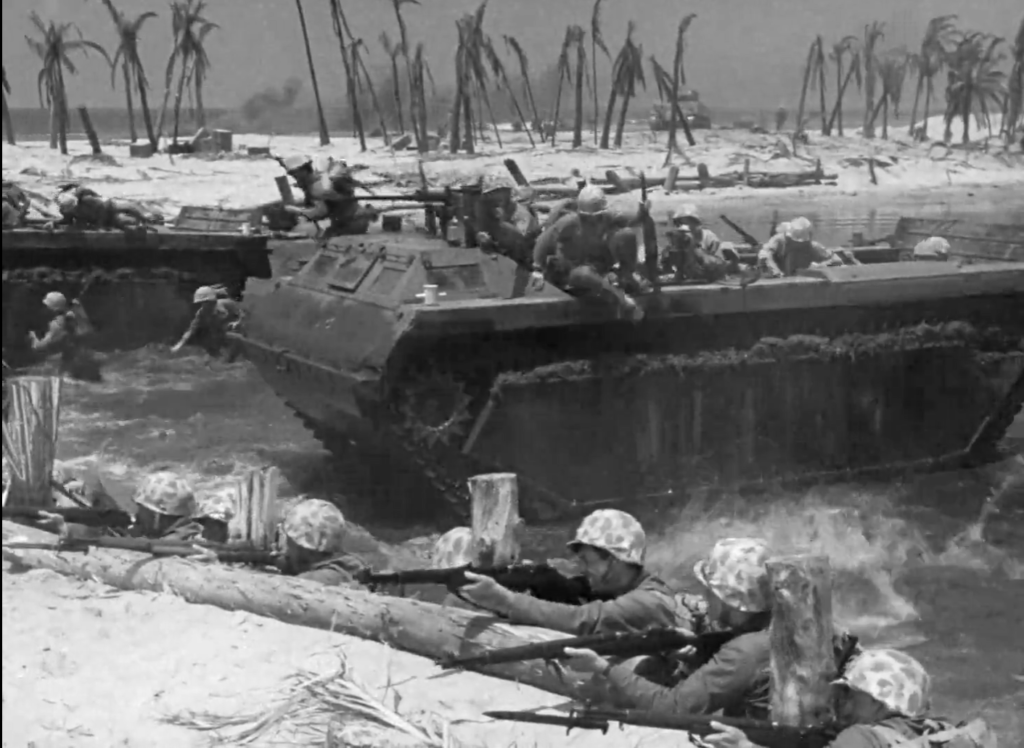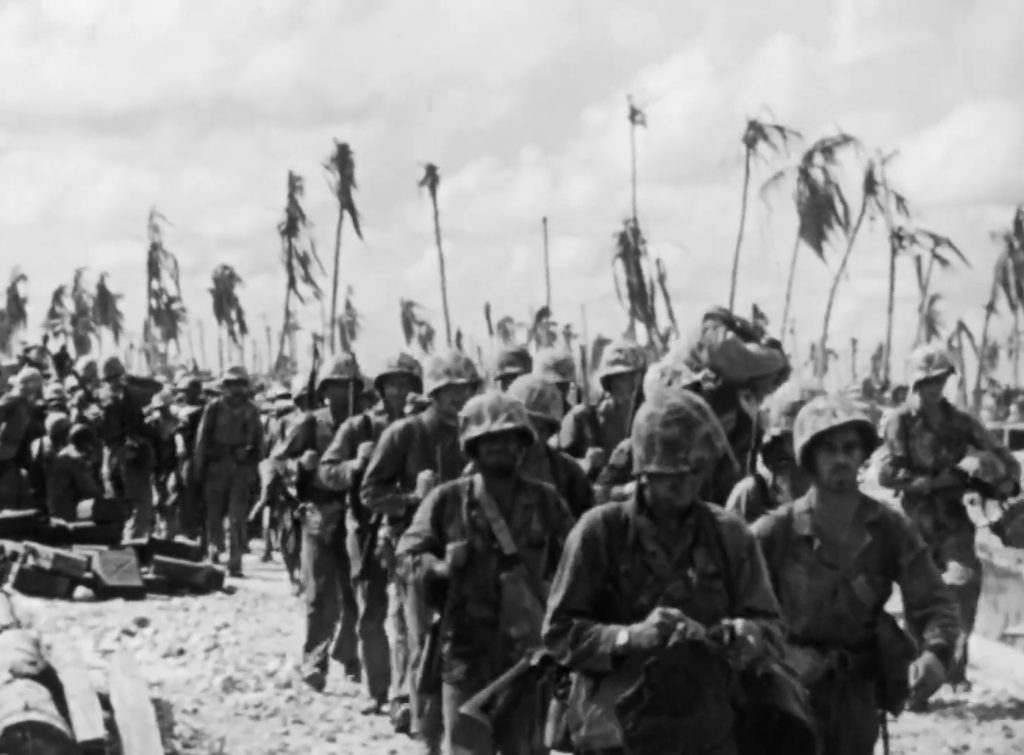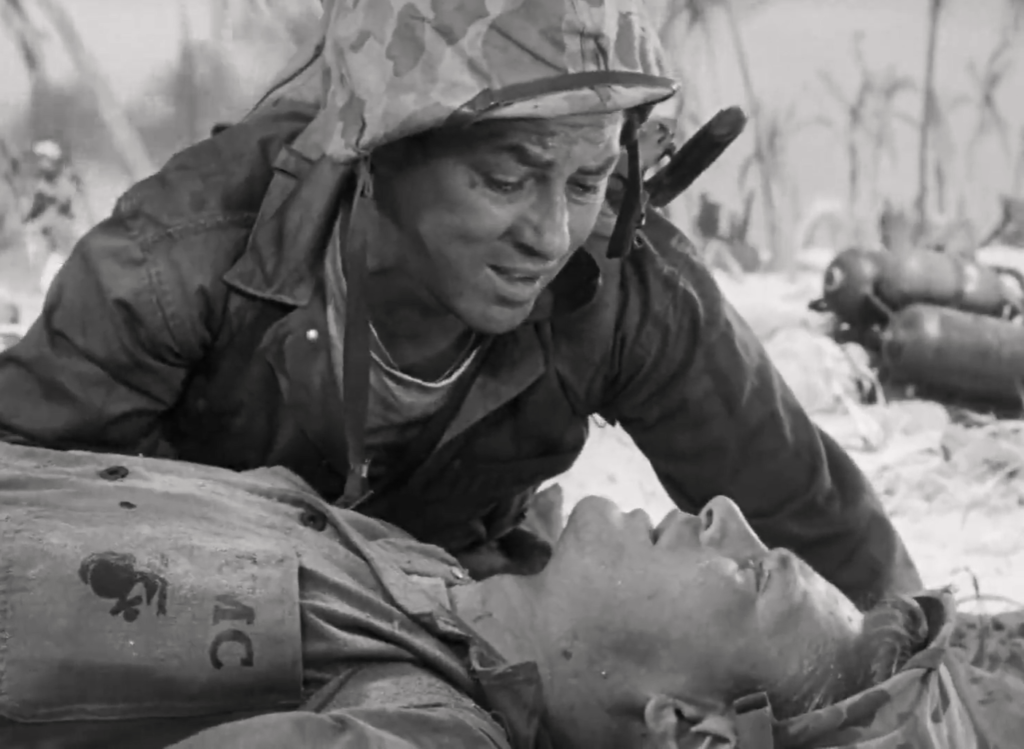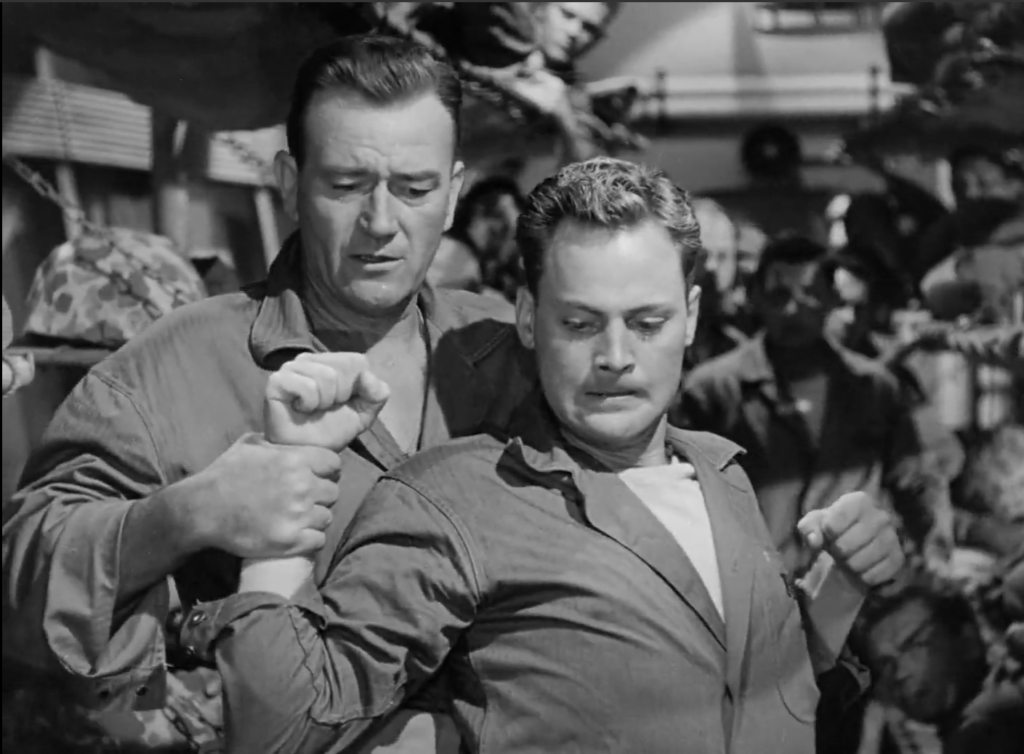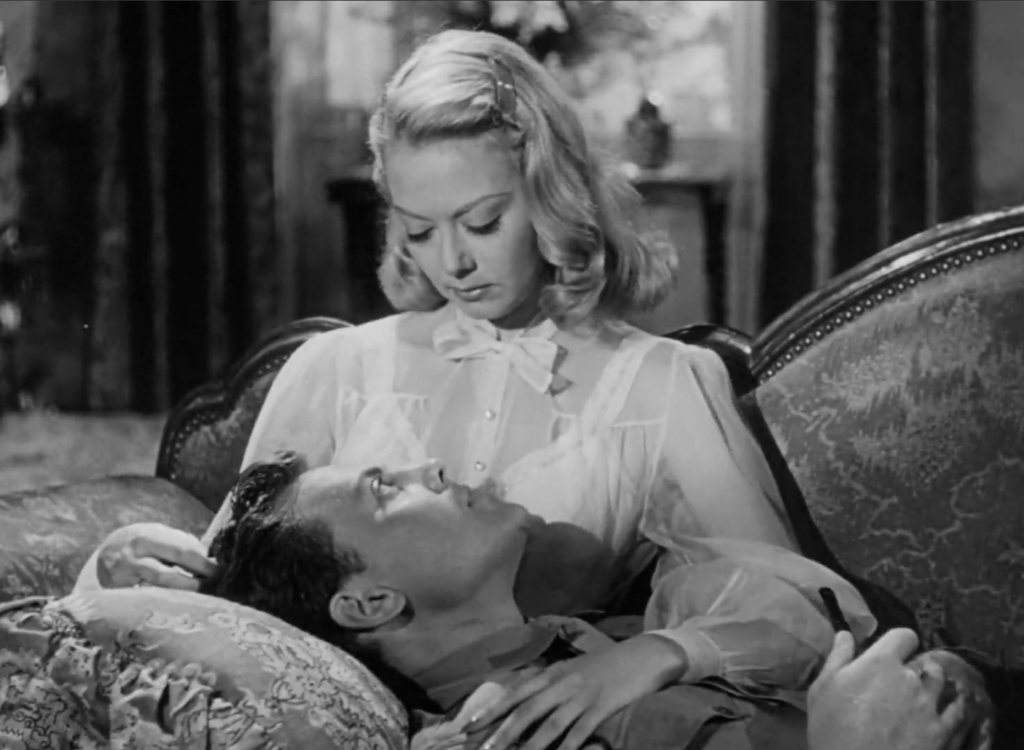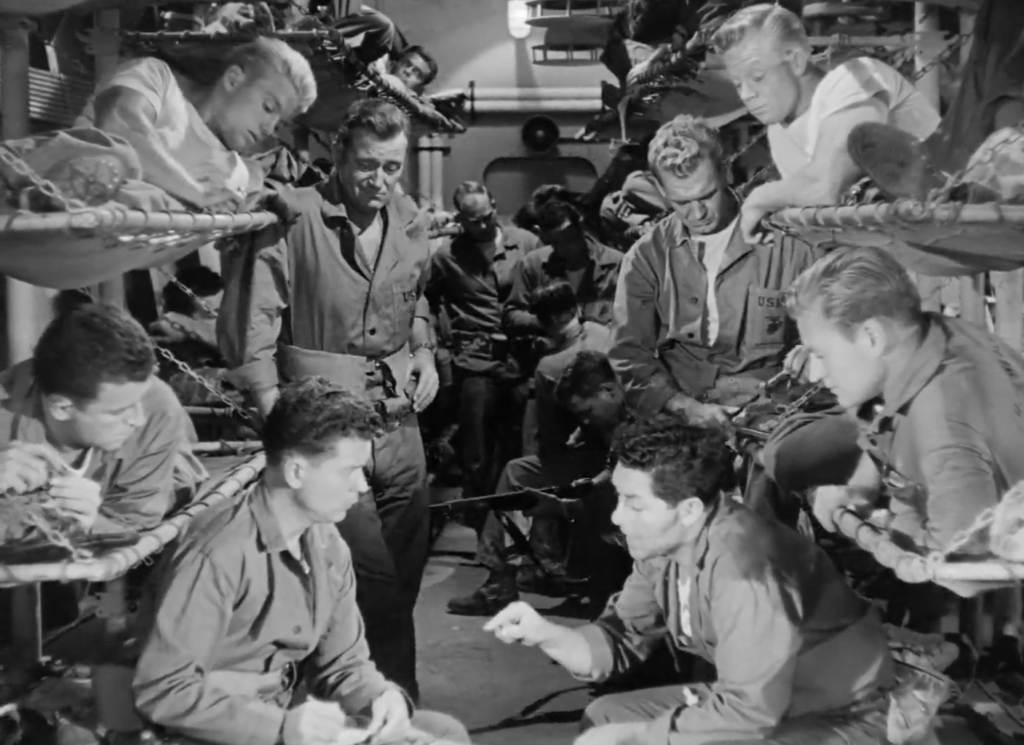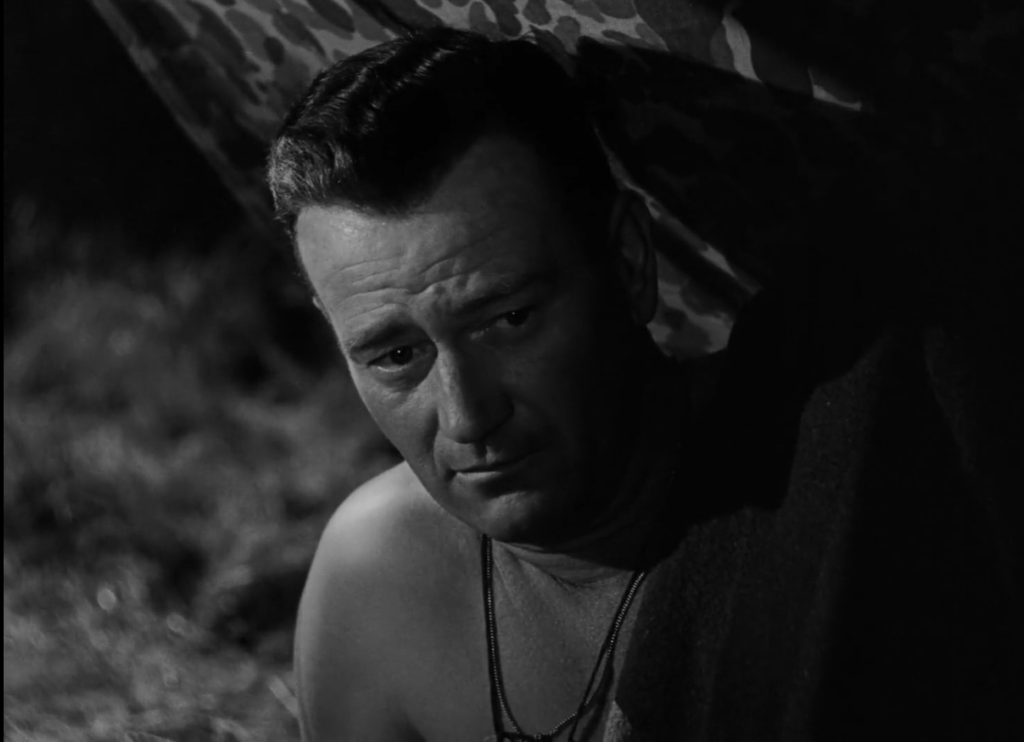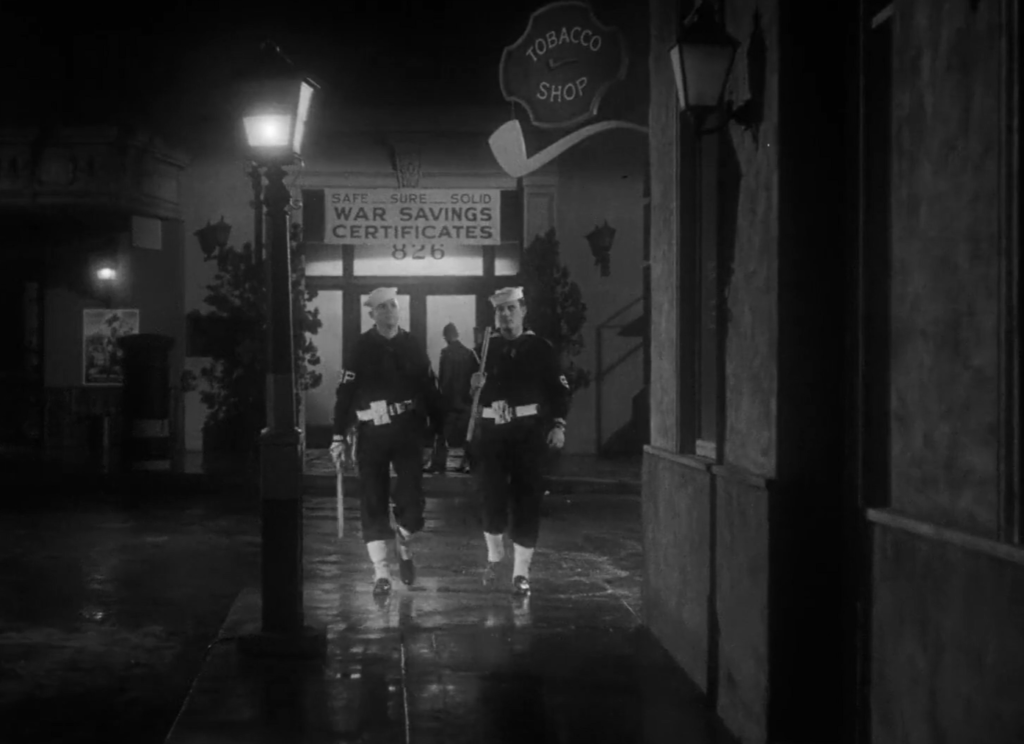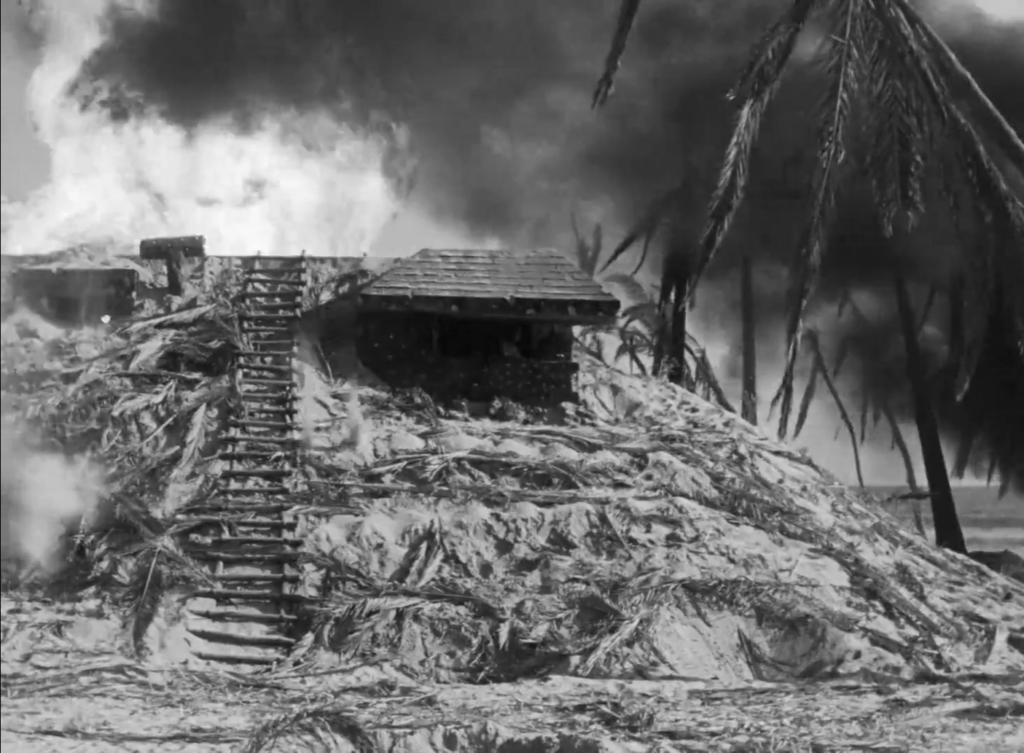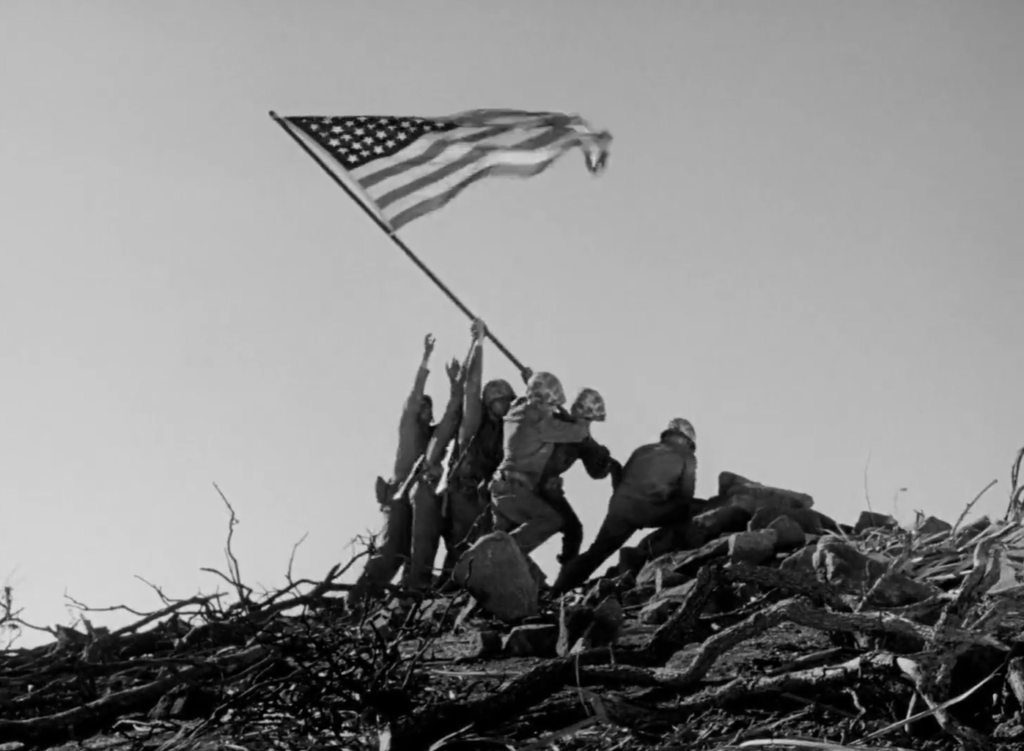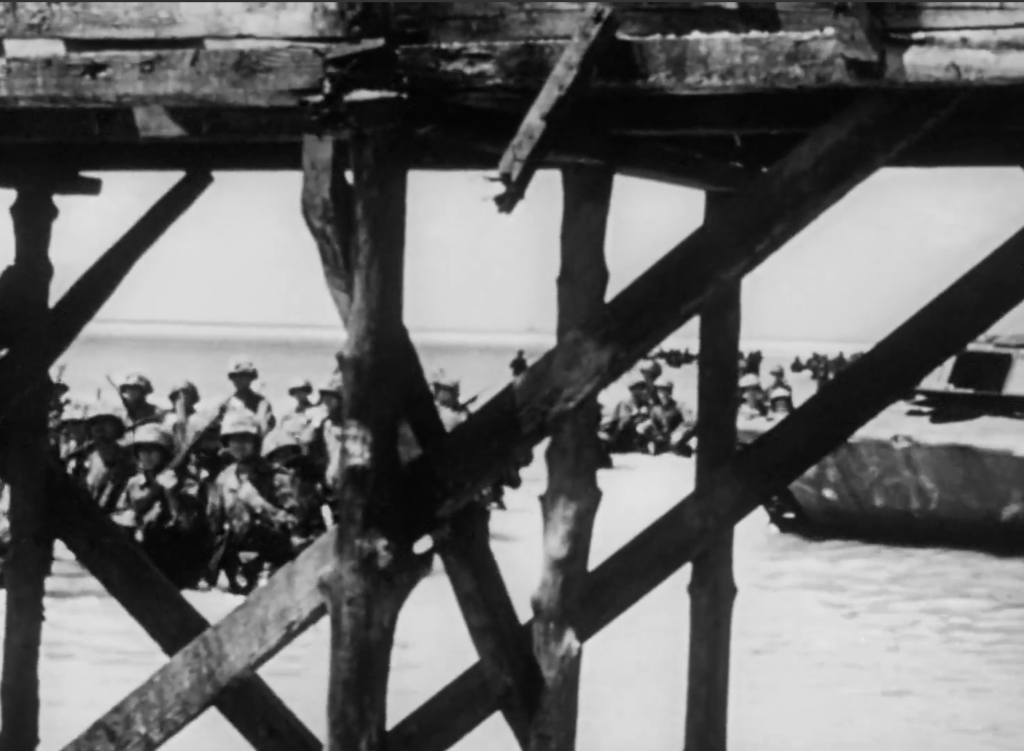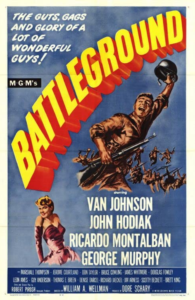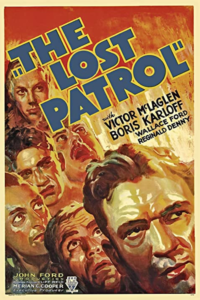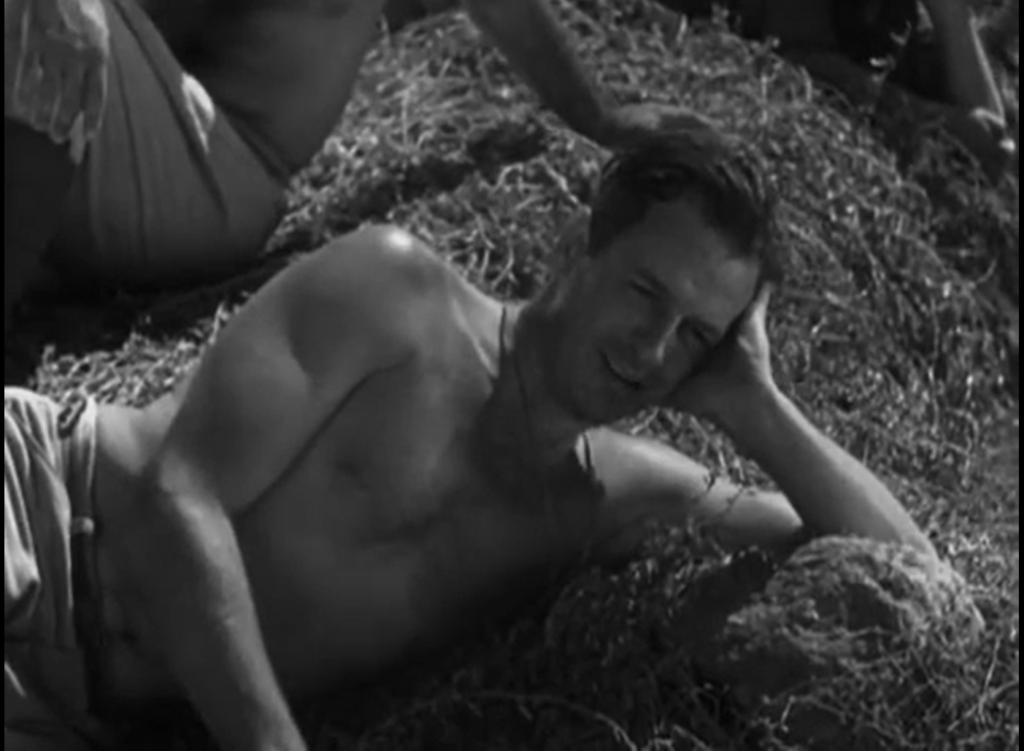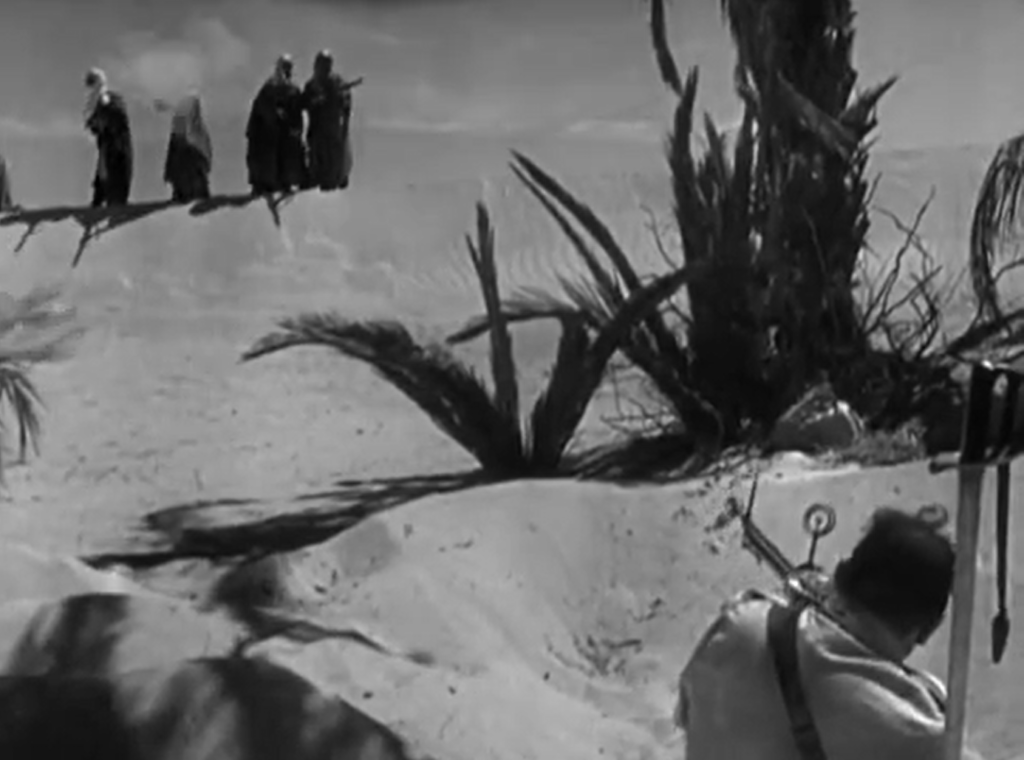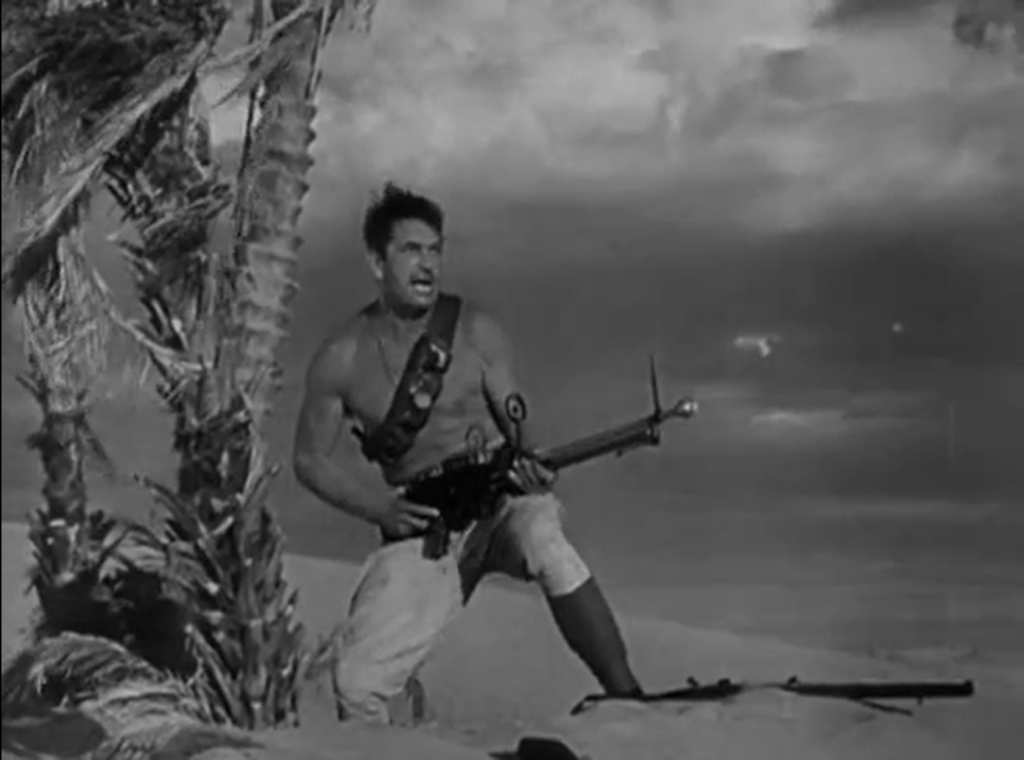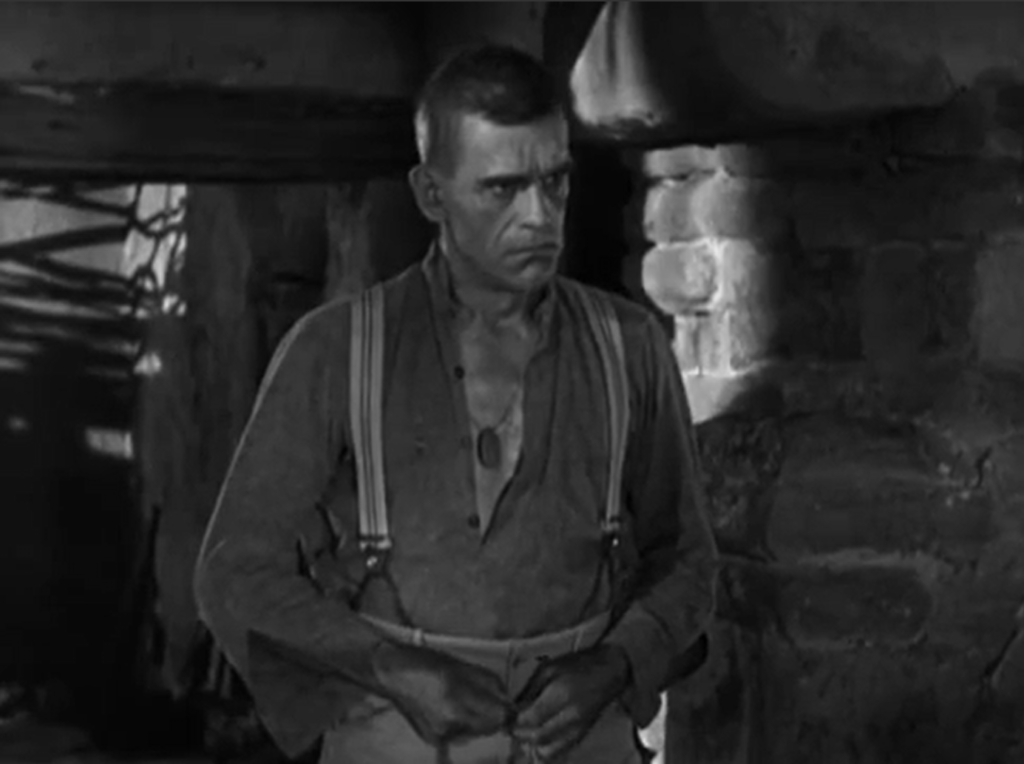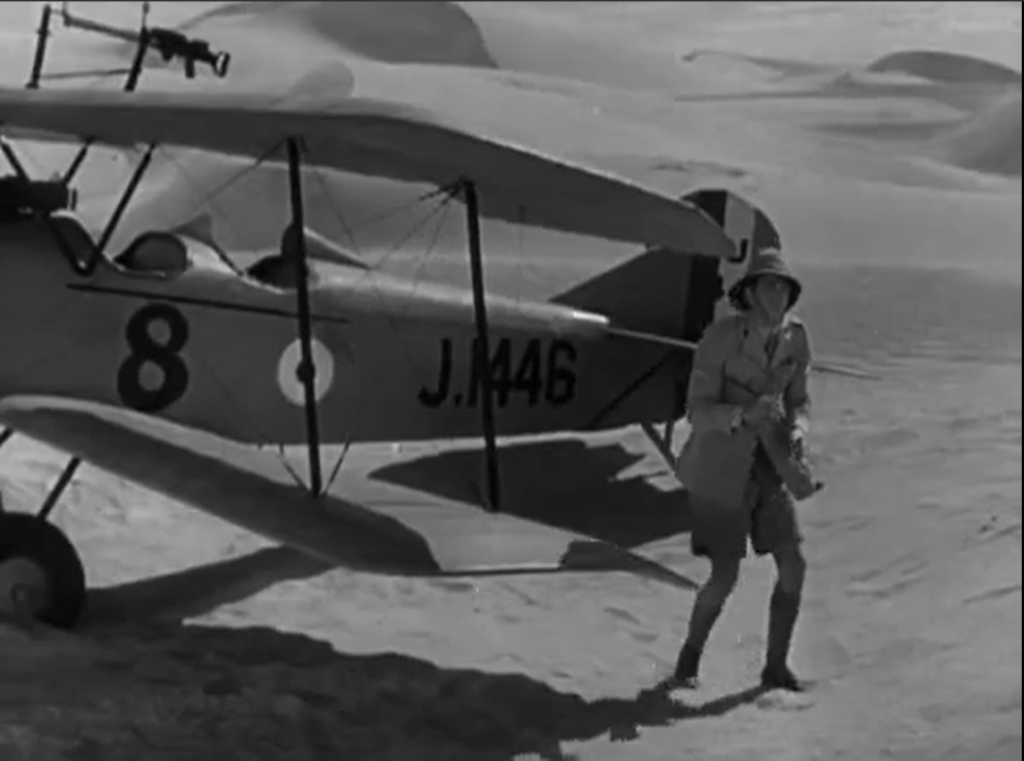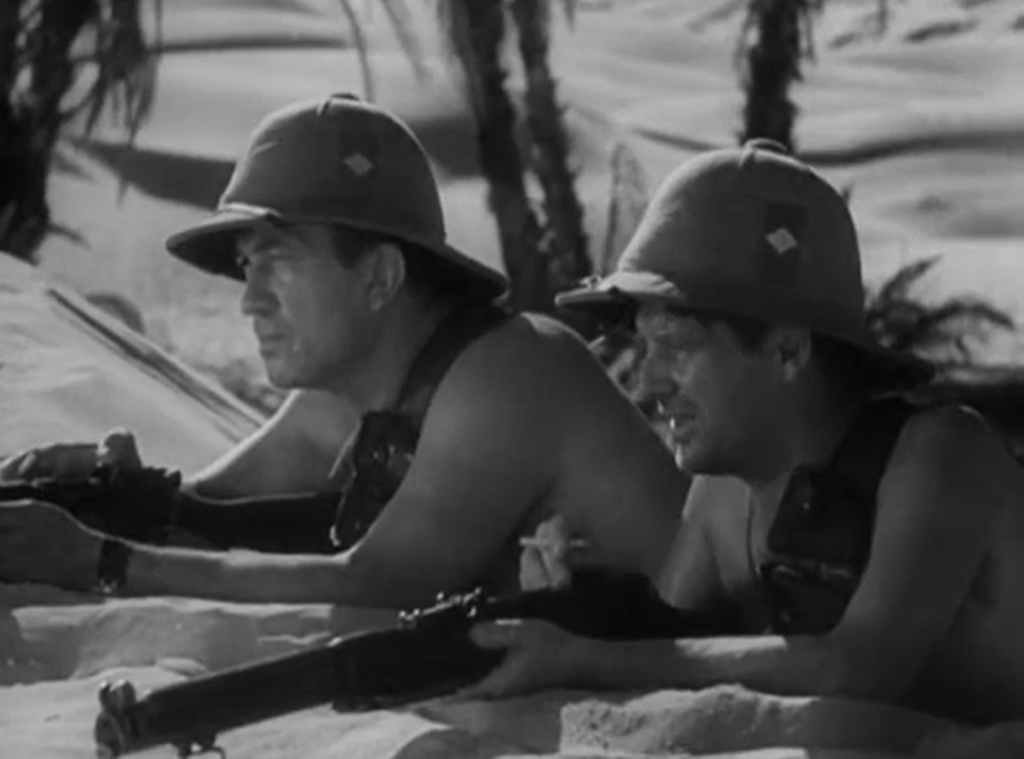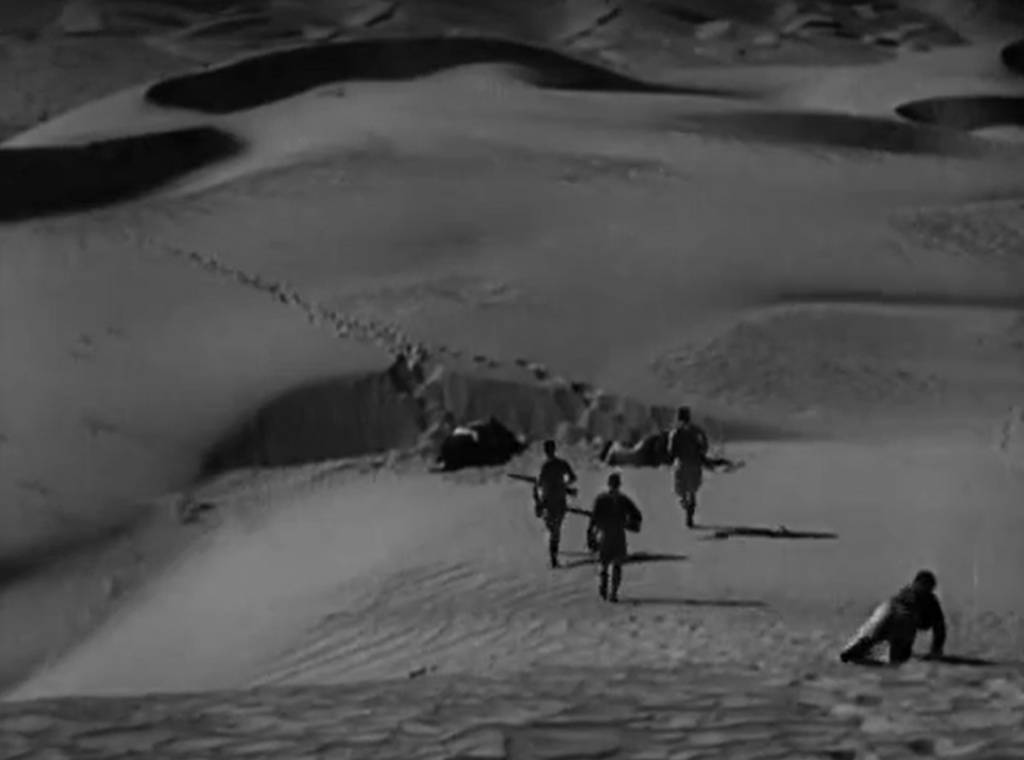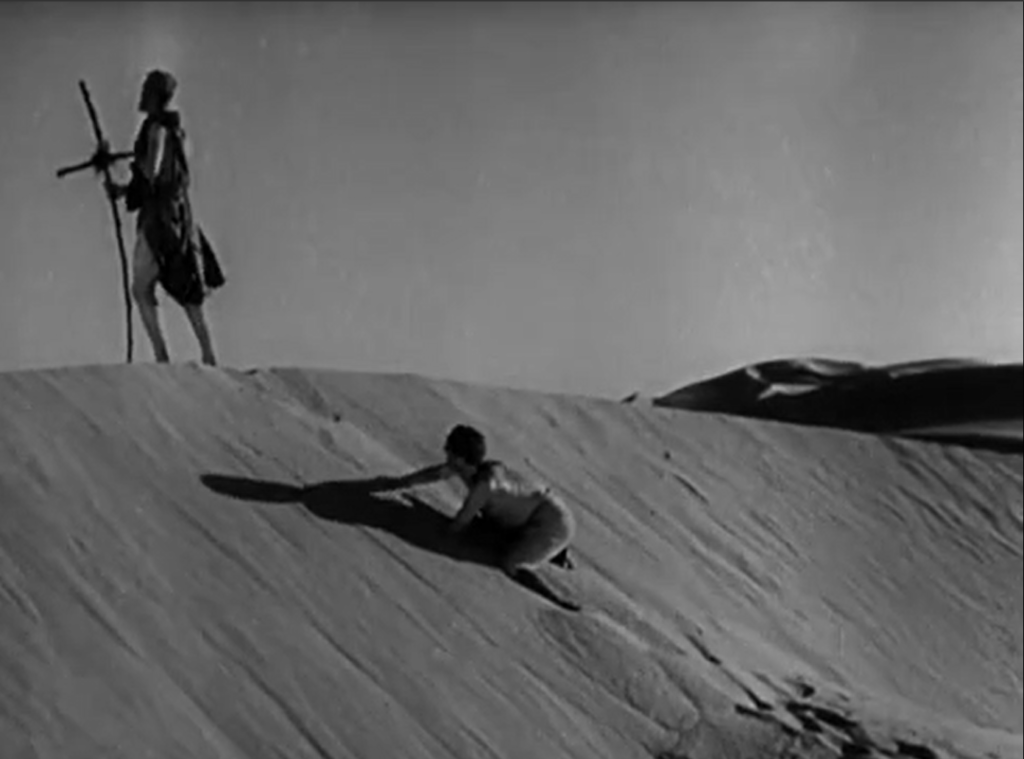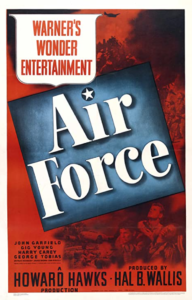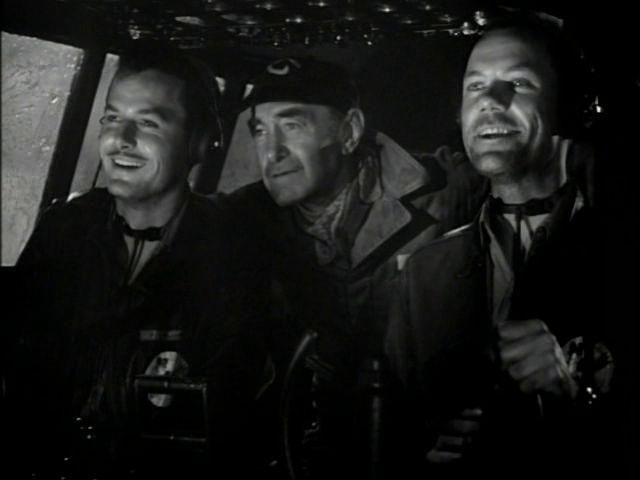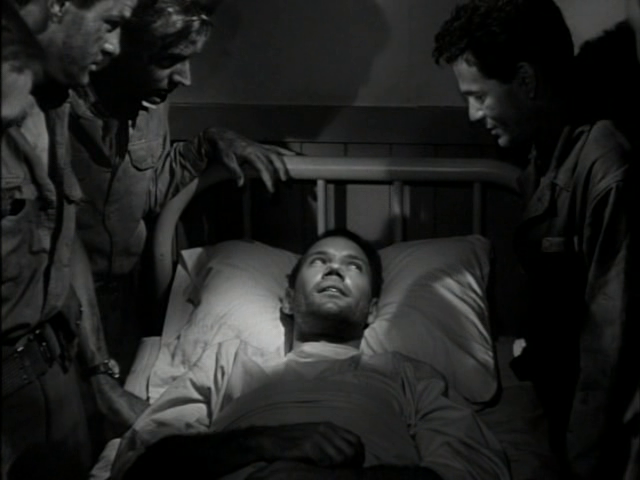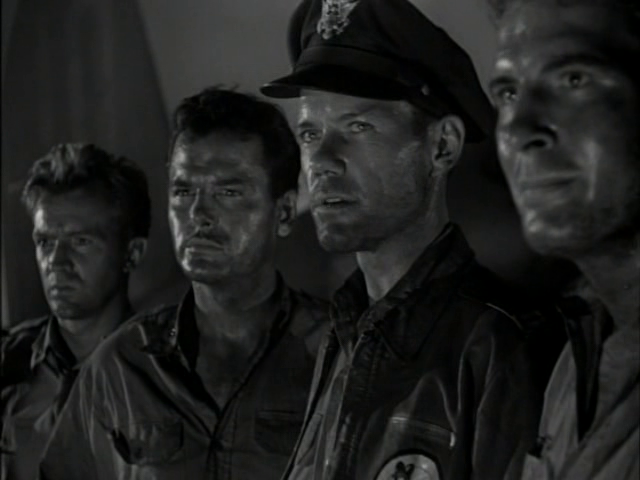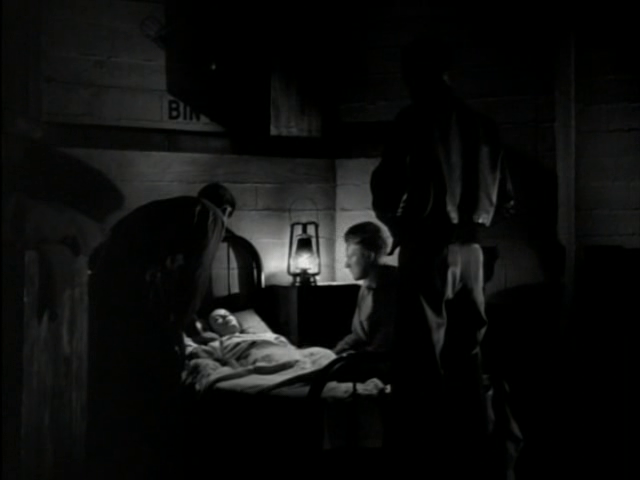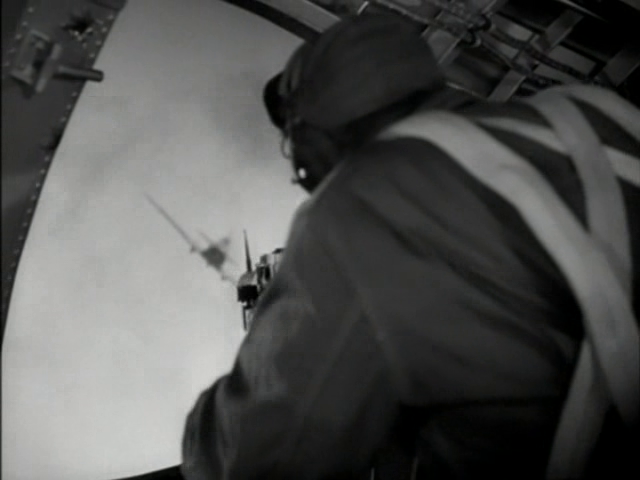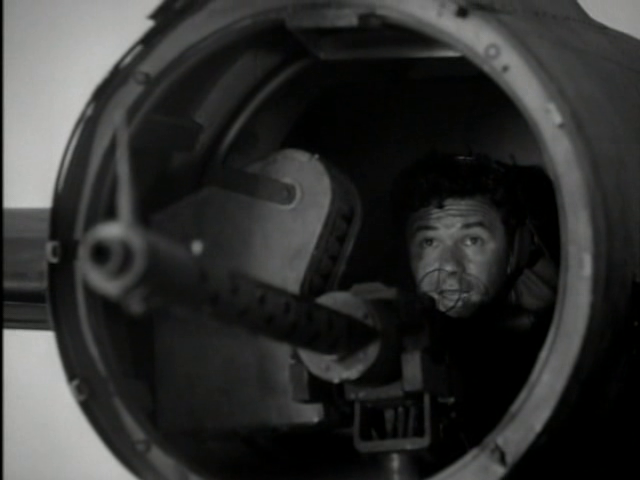|
Genres, Themes, Actors, and Directors:
- James Whitmore Films
- Ricardo Montalban Films
- Richard Jaeckel Films
- Soldiers
- Van Johnson Films
- William Wellman Films
- World War II
Response to Peary’s Review:
Peary writes that “this WWII film” concentrating “on the 101st Airborne Division” — “a melting-pot platoon” that earned “the sobriquet ‘The Battered Bastards of Bastogne‘” — “de-emphasizes the action and tries to provide insight into the individual soldiers,” meaning “we hear them talk a lot about everyday things, and see how they respond to women, fighting, fear, [and] hardships.” But Peary argues (I disagree) that “it all seems forced,” and asserts “these guys are so boring that you’ll want them to start firing their guns” (!). He states that the “best scenes deal with [the] platoon in [a] cat-and-mouse game with Germans dressed as American soldiers”:
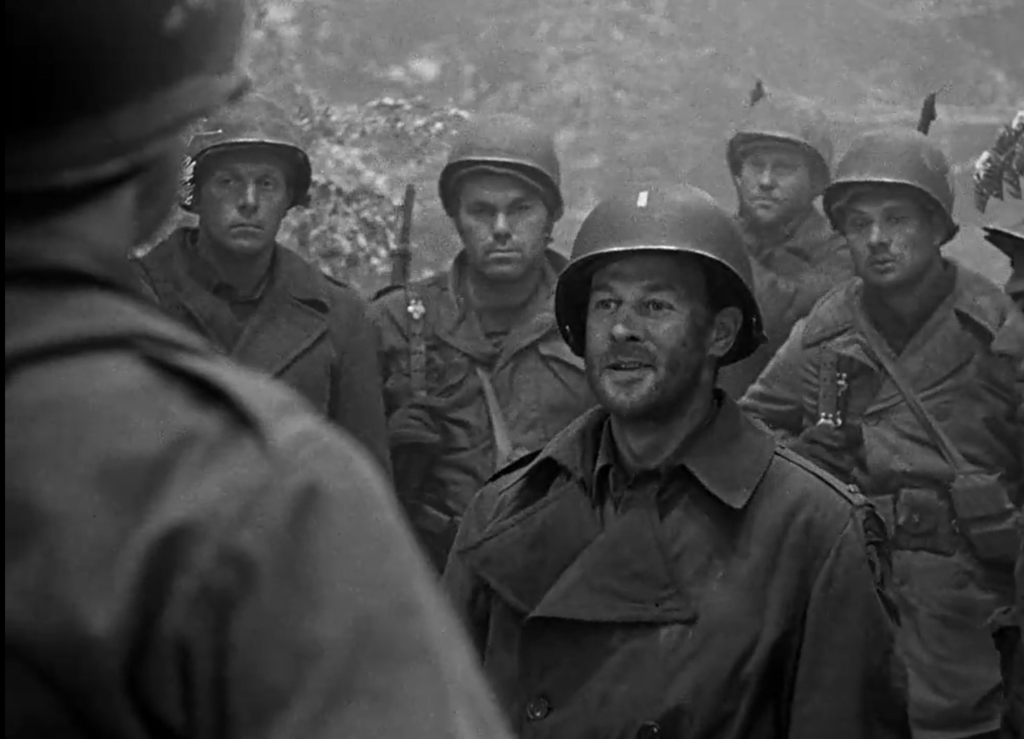
… and notes that he likes how director William “Wellman never lets us forget that the men are feeling the effects of the cold and deep snow.”
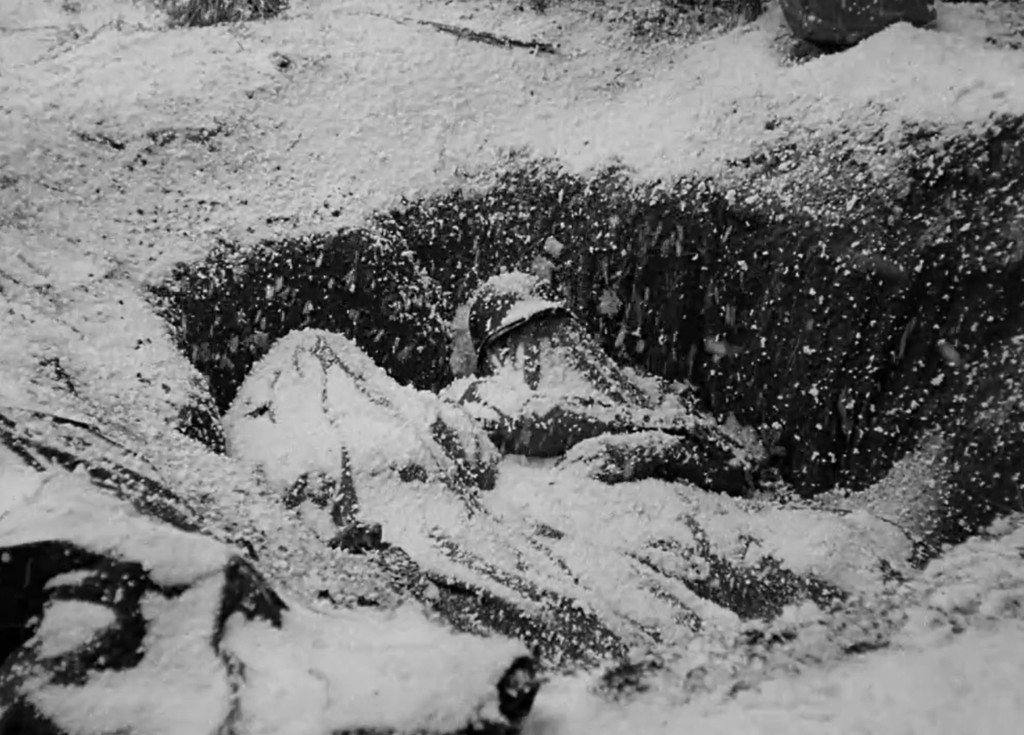
However, he complains that “the guys are so wrapped up you can’t tell them apart” (not true).
I’m more in agreement with a review by DVD Savant, who argues that “Battleground is the best of the generic ‘GIs in the Mud’ genre of war film.” He writes:
Robert Pirosh’s script avoids most wartime clichés that dogged movies like Guadalcanal Diary. Free of the need to boost morale, soldiers no longer gather like happy campers to sing songs, and nobody talks about their girl or dog back home. Talking about food is discouraged — the subject is too depressing. The soldiers complain bitterly and are understandably selfish. ‘Nobody cares’ is the first thing heard when they feel they’ve been abandoned… The film captures the obstinate stubbornness of the American fighter to the nth degree, and is a respectful portrait of a generation of citizen-soldiers.
Indeed, this sobering film shows us exactly how miserable it was for these men, who would — just for instance — spend hours digging fox holes only to be told the next minute they were moving on.

The screenplay hones in on specific (sometimes humorous) stories to ground us in the arc of the men’s experiences while demonstrating both their unity (they rely deeply on one another) and their individual challenges. Newcomer Thompson, for instance, can’t catch a break when he first arrives on the scene, trying in vain to secure a bunk for himself in their crowded quarters:
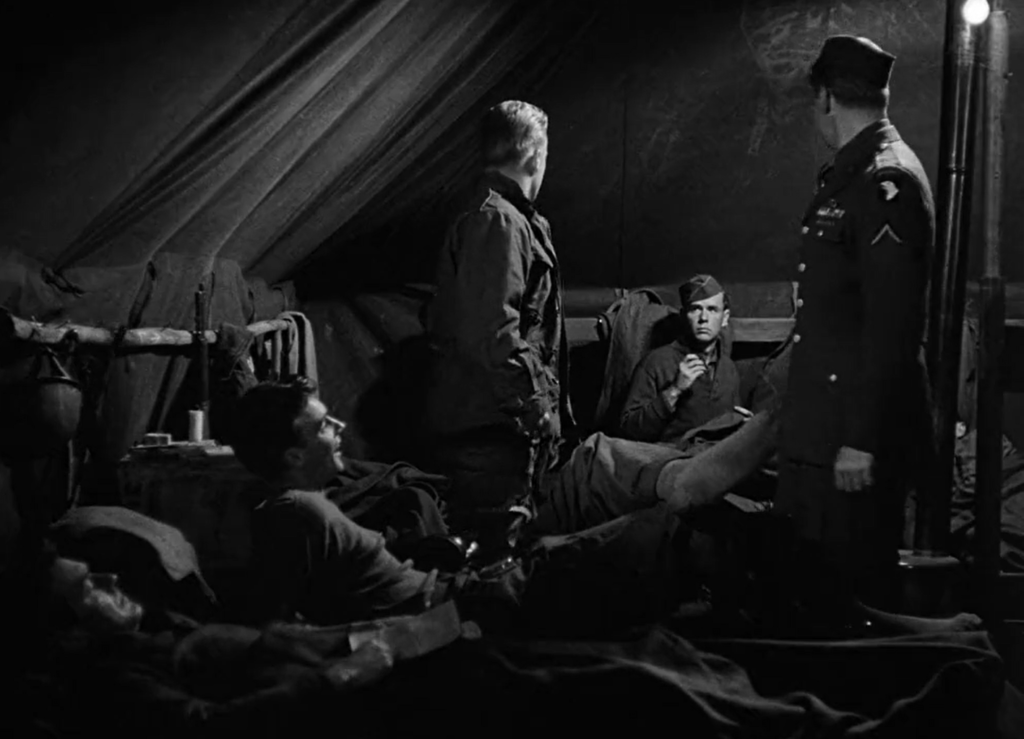
He eventually realizes he needs to speak up and make himself known in order to be a visible part of the group.
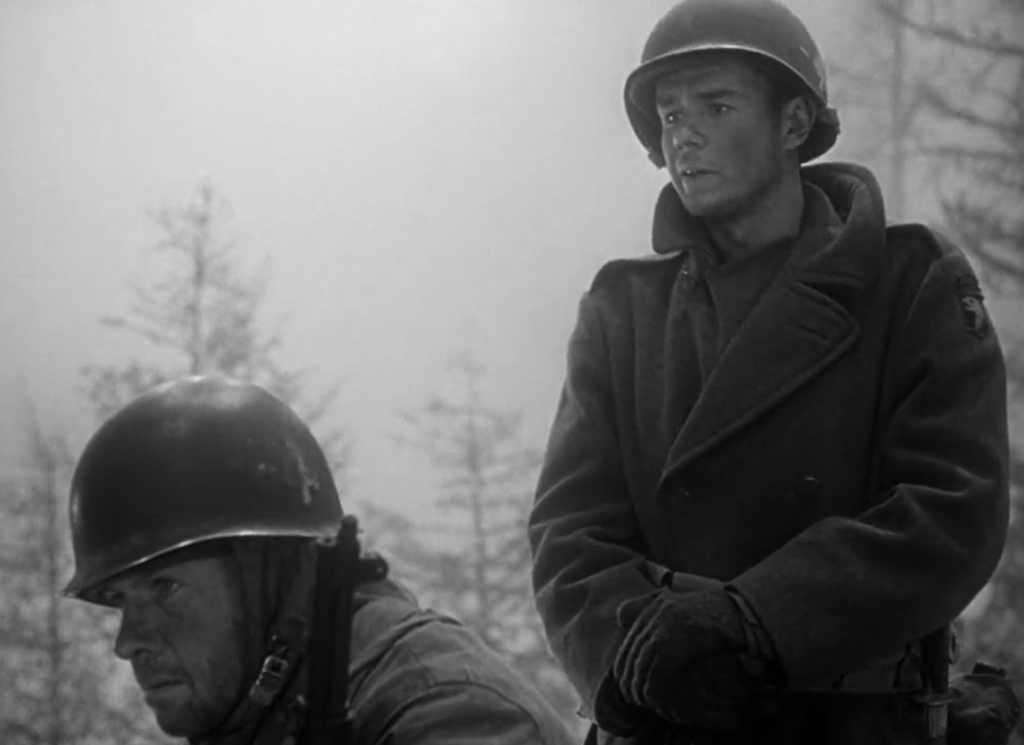
Fun-loving Johnson primarily wants to dally with a local French girl (Denise Darcel):
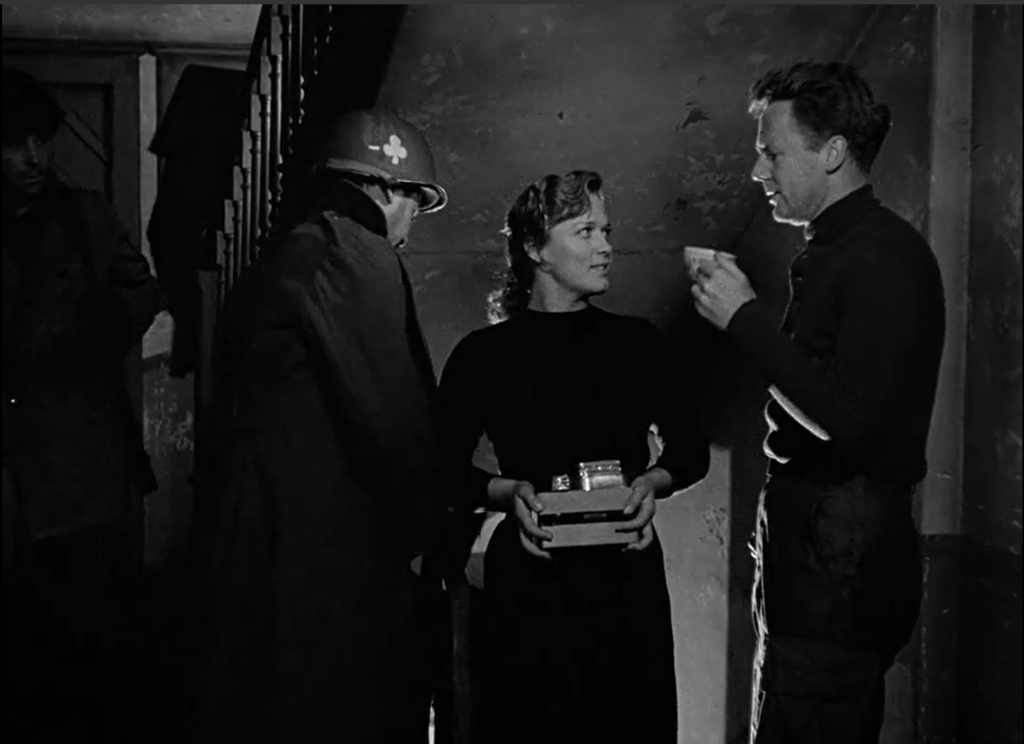
… and, once that opportunity is lost, to cook the eggs he’s grabbed from her hens (a laughably futile task which gets postponed time and again):

Meanwhile, Murphy eagerly awaits paperwork that will allow him to head home to care for his sick wife and young children:
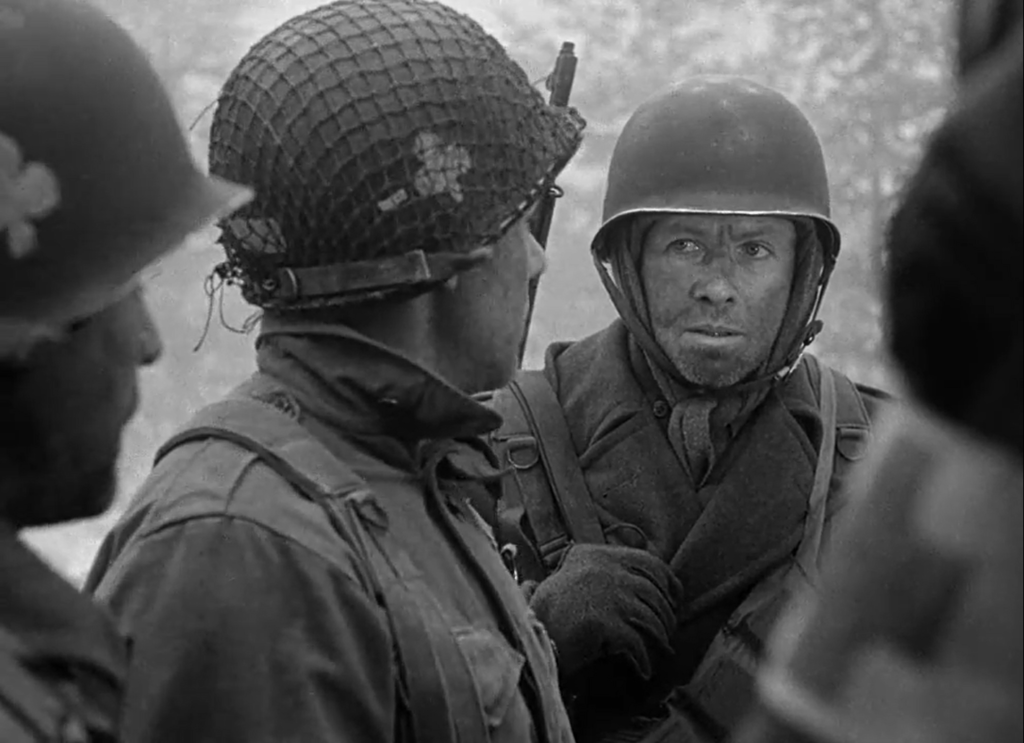
… and fearful Jaeckel insists on heading to the aid station, clearly as a way to avoid combat (though he’s not demonized):
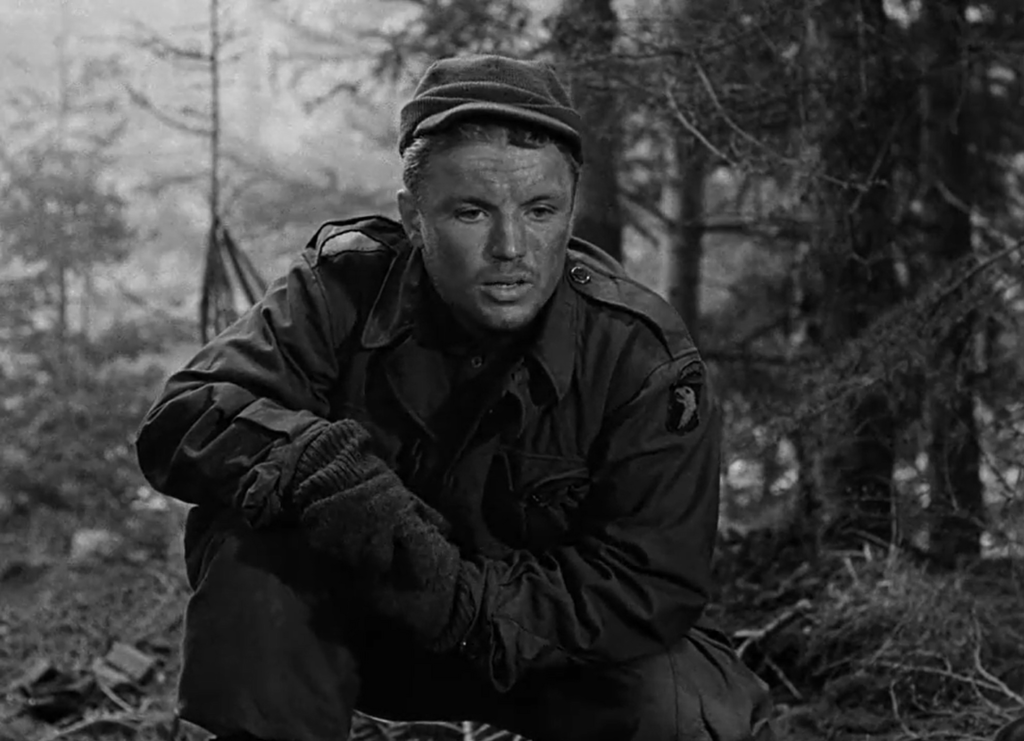
Indeed, the film does not shy away from the fact that these men were not only weary but often flat-out scared. In a particularly poignant scene, Johnson flees a battle only to find himself flanked by young Thompson, causing him to make a split-second decision that turns out to be heroic — but didn’t originate that way:
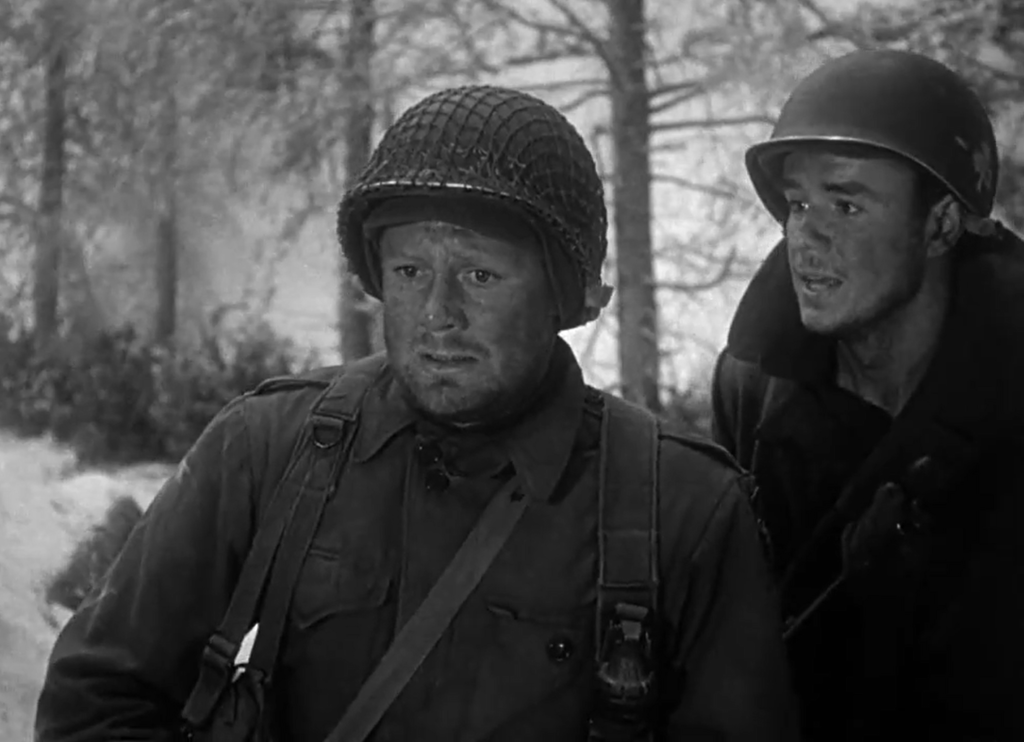
Meanwhile, we see the authentic giddiness experienced by a Latino from Los Angeles (Montalban) who’s never seen snow before, and begins playing baseball with snowballs:
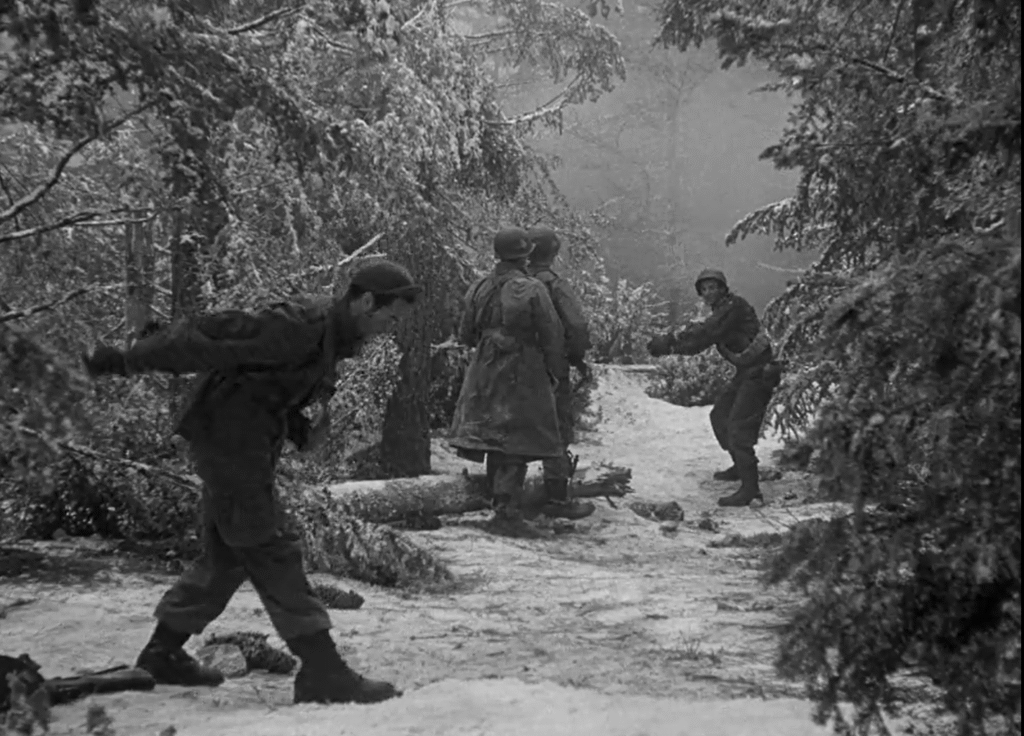
… though the relentless snow is ultimately shown to be oppressive and fatal:
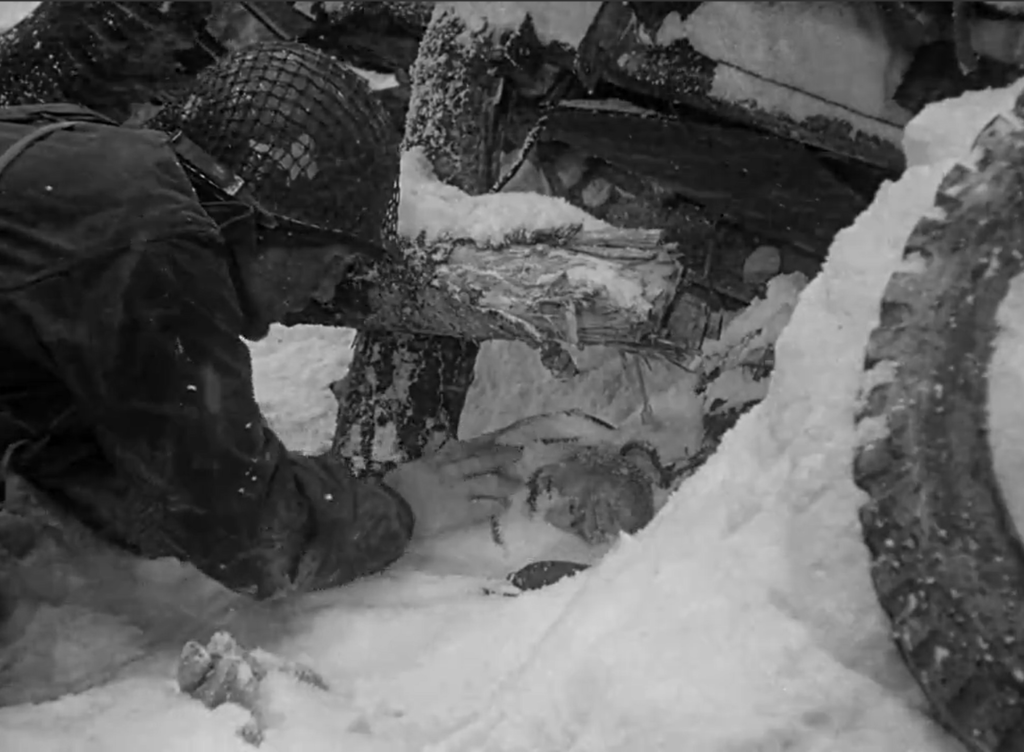
Wellman and DP Paul Vogel frame each sequence for maximum interest, making this movie a visual treat even as we’re watching such a brutal storyline. It helps to know that assistance will ultimately be on its way:
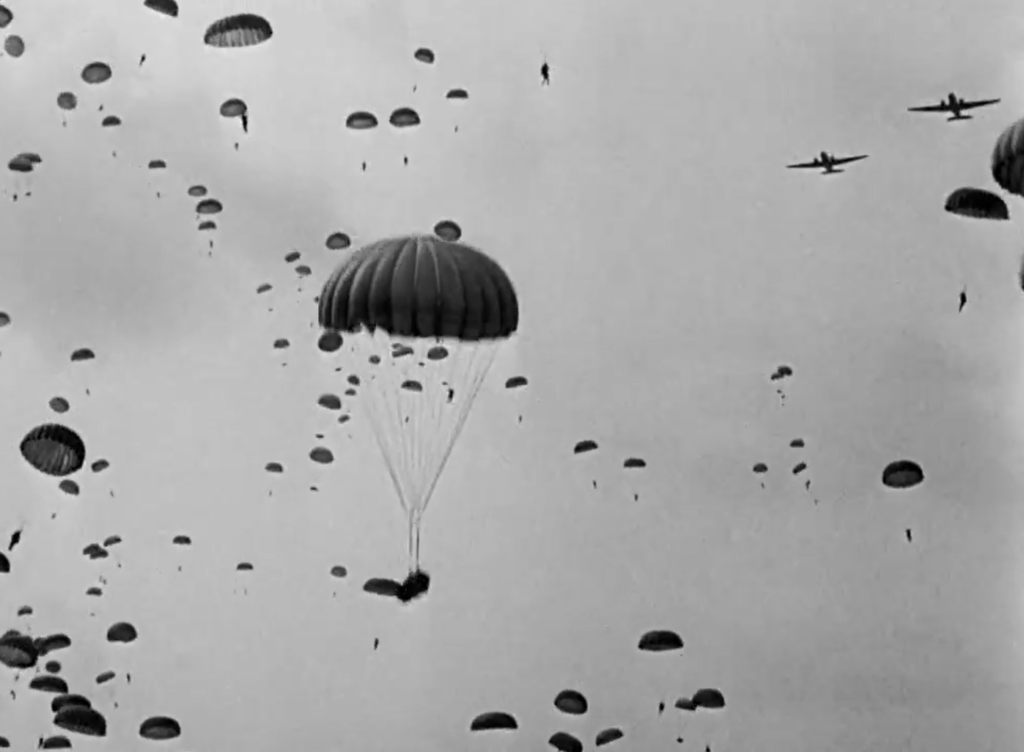
Notable Performances, Qualities, and Moments:
- Fine performances by the ensemble cast
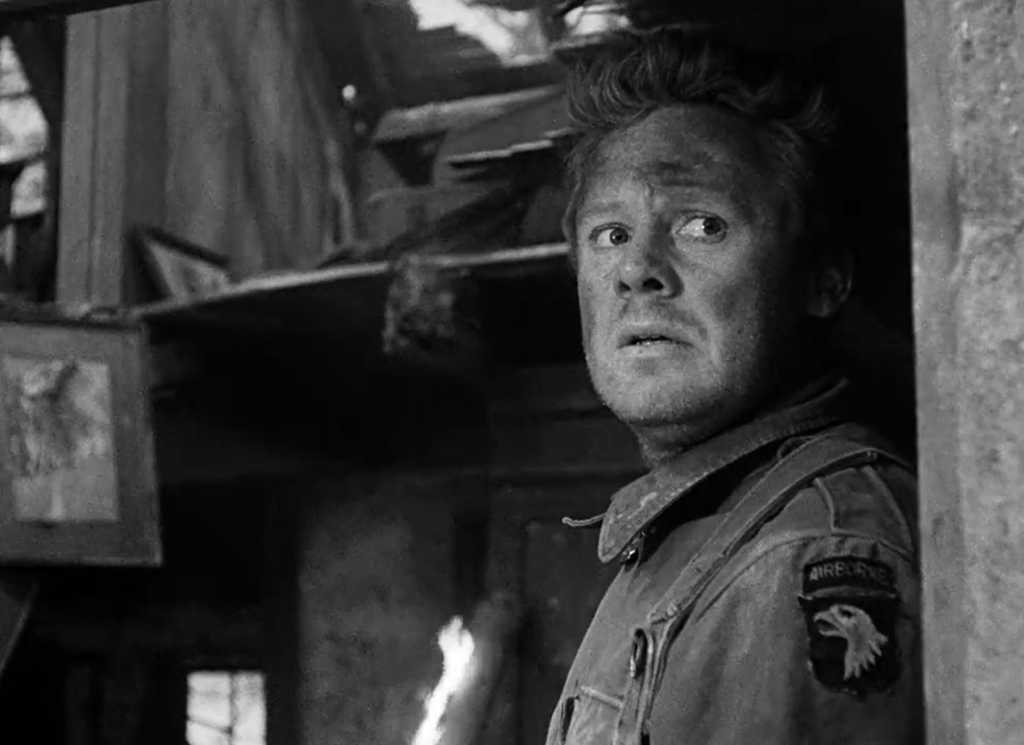
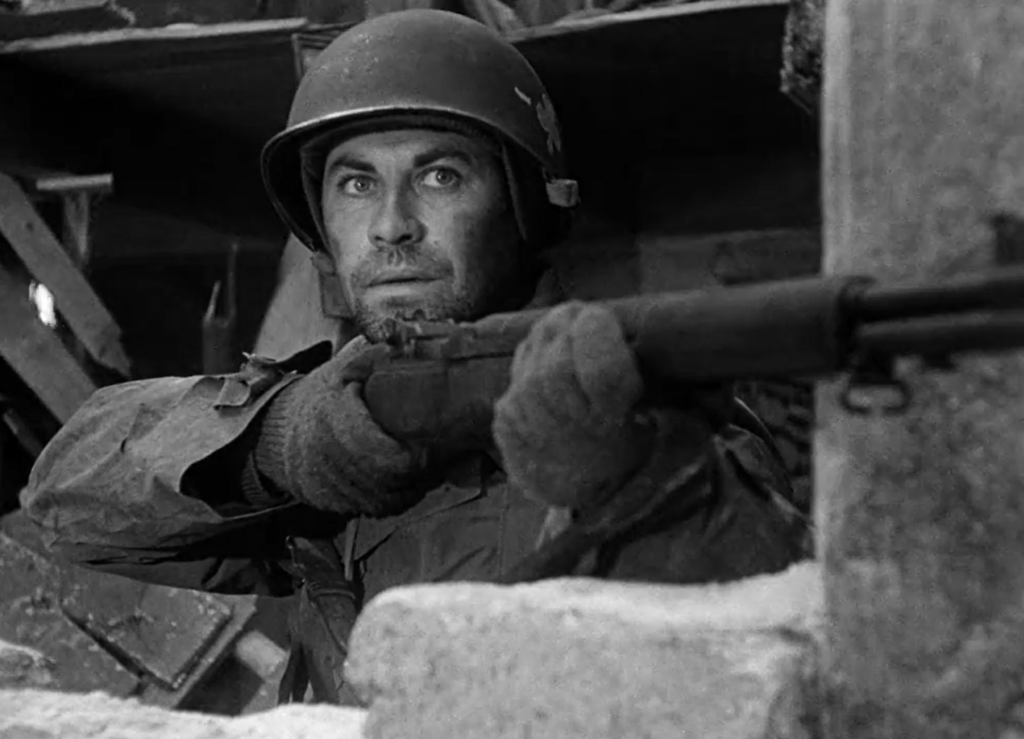
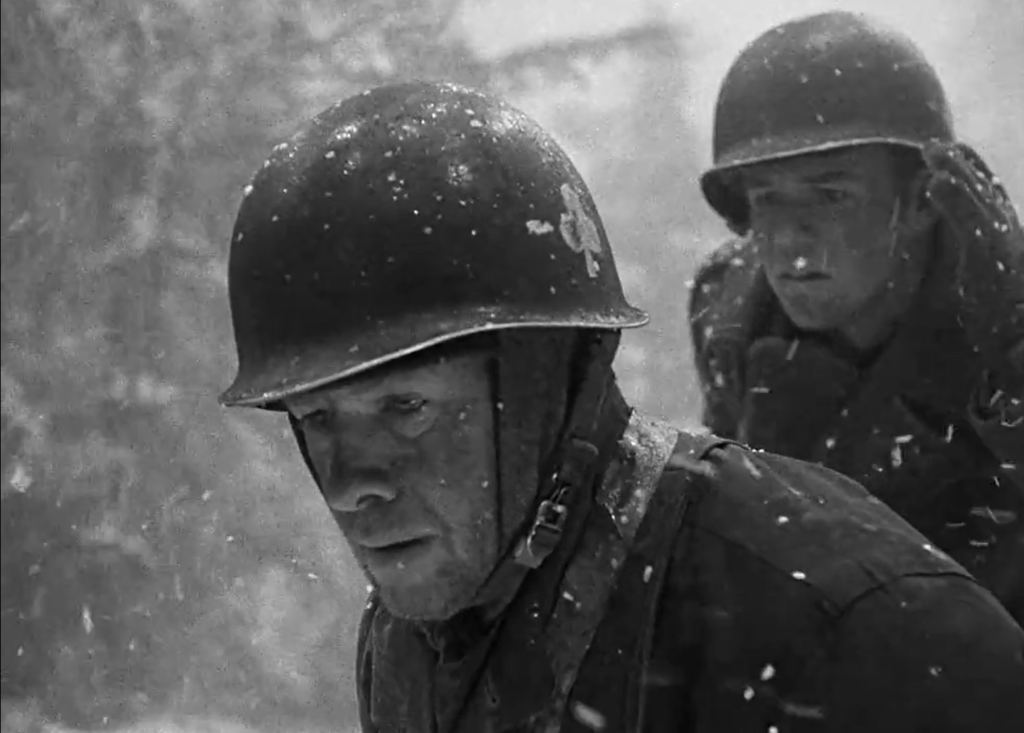
- Paul Vogel’s cinematography
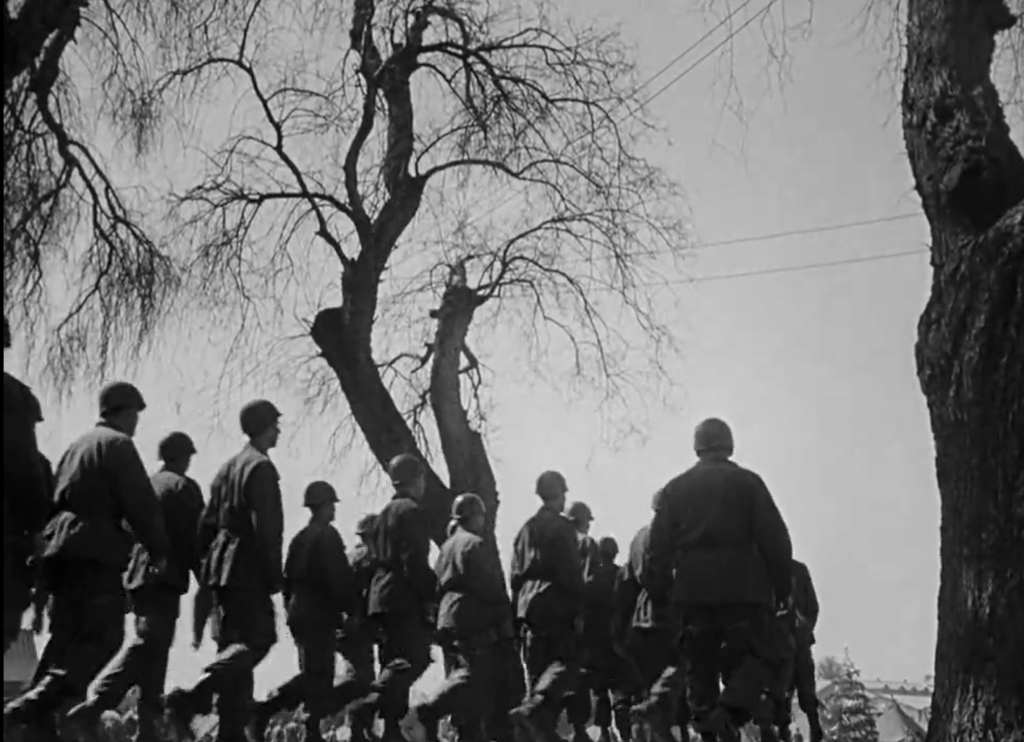
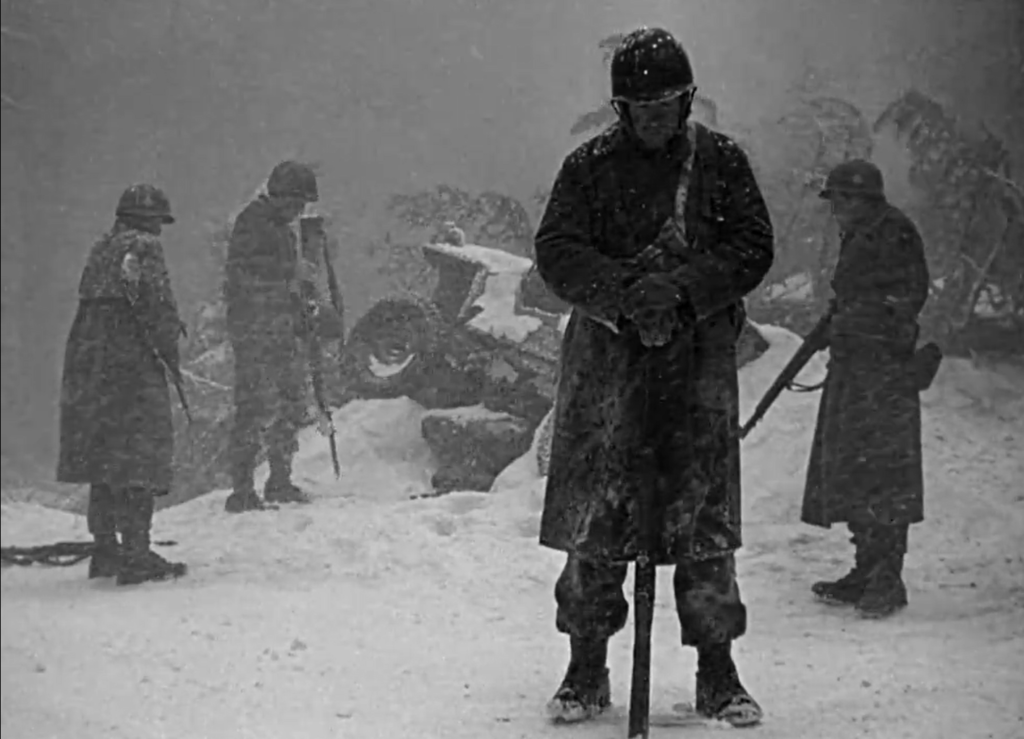
- Convincing indoor sound stages
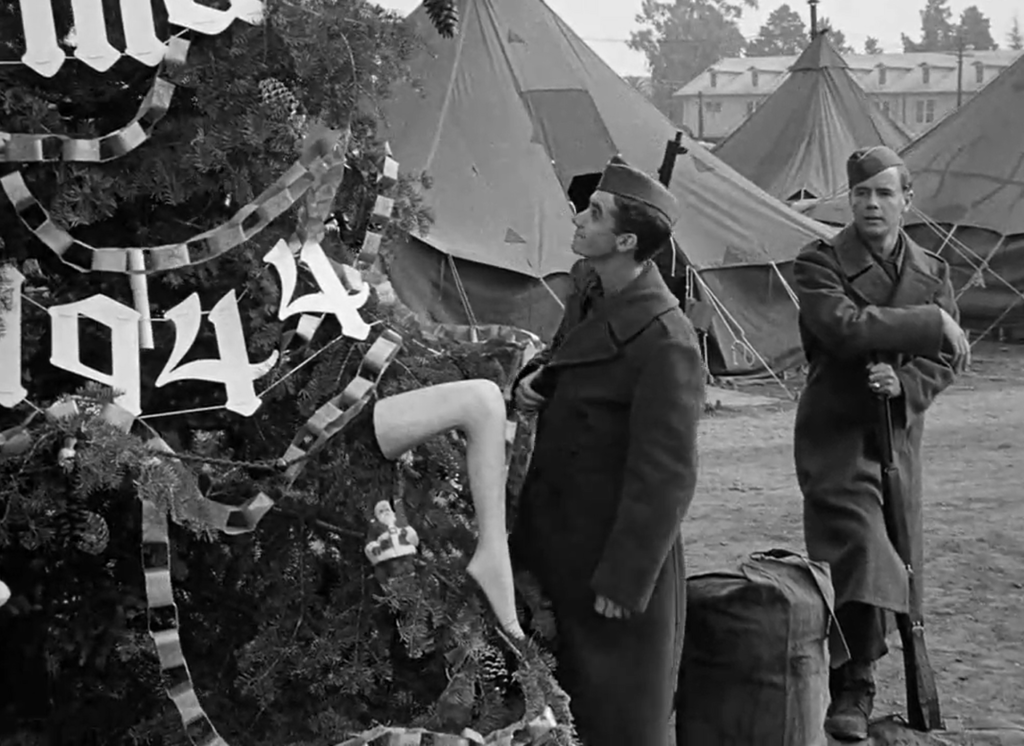
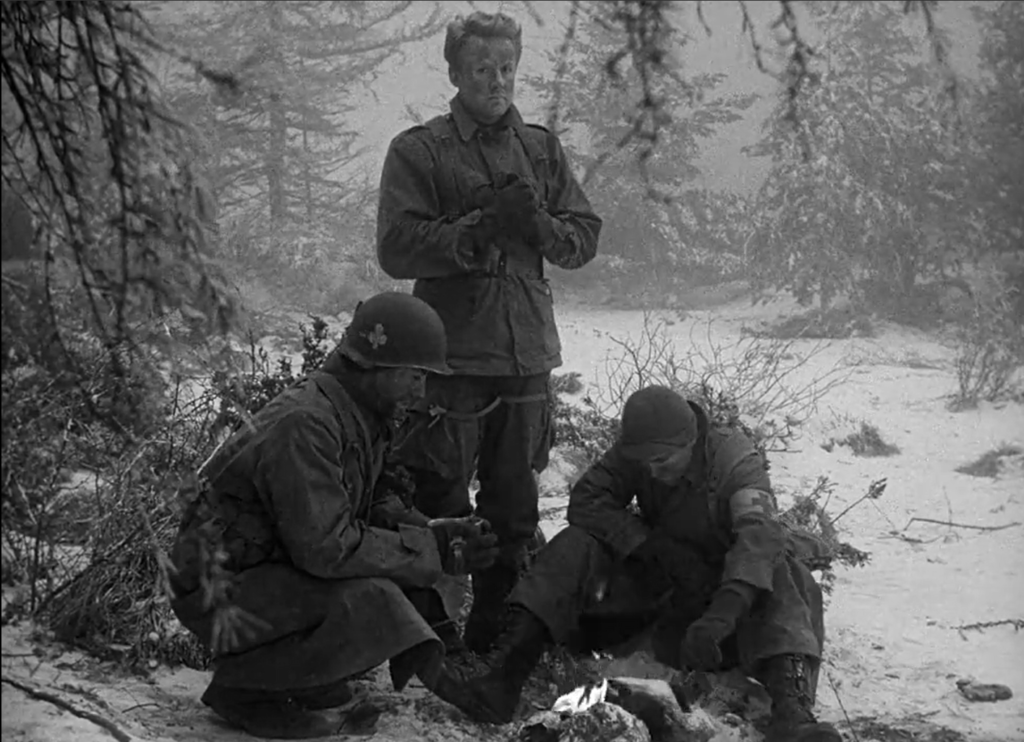
Must See?
Yes, as a powerful wartime film by a master director.
Categories
- Good Show
- Important Director
Links:
|
